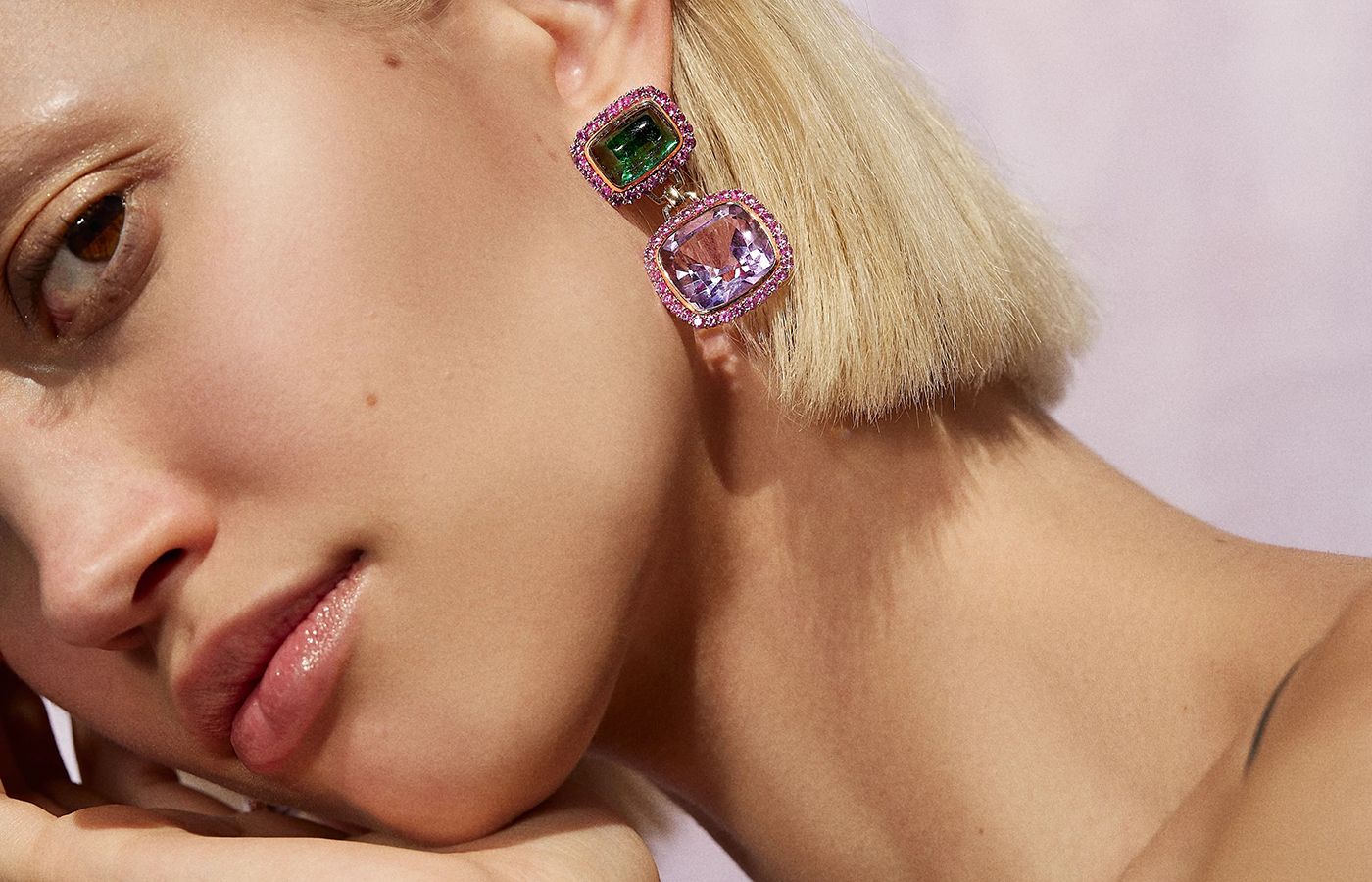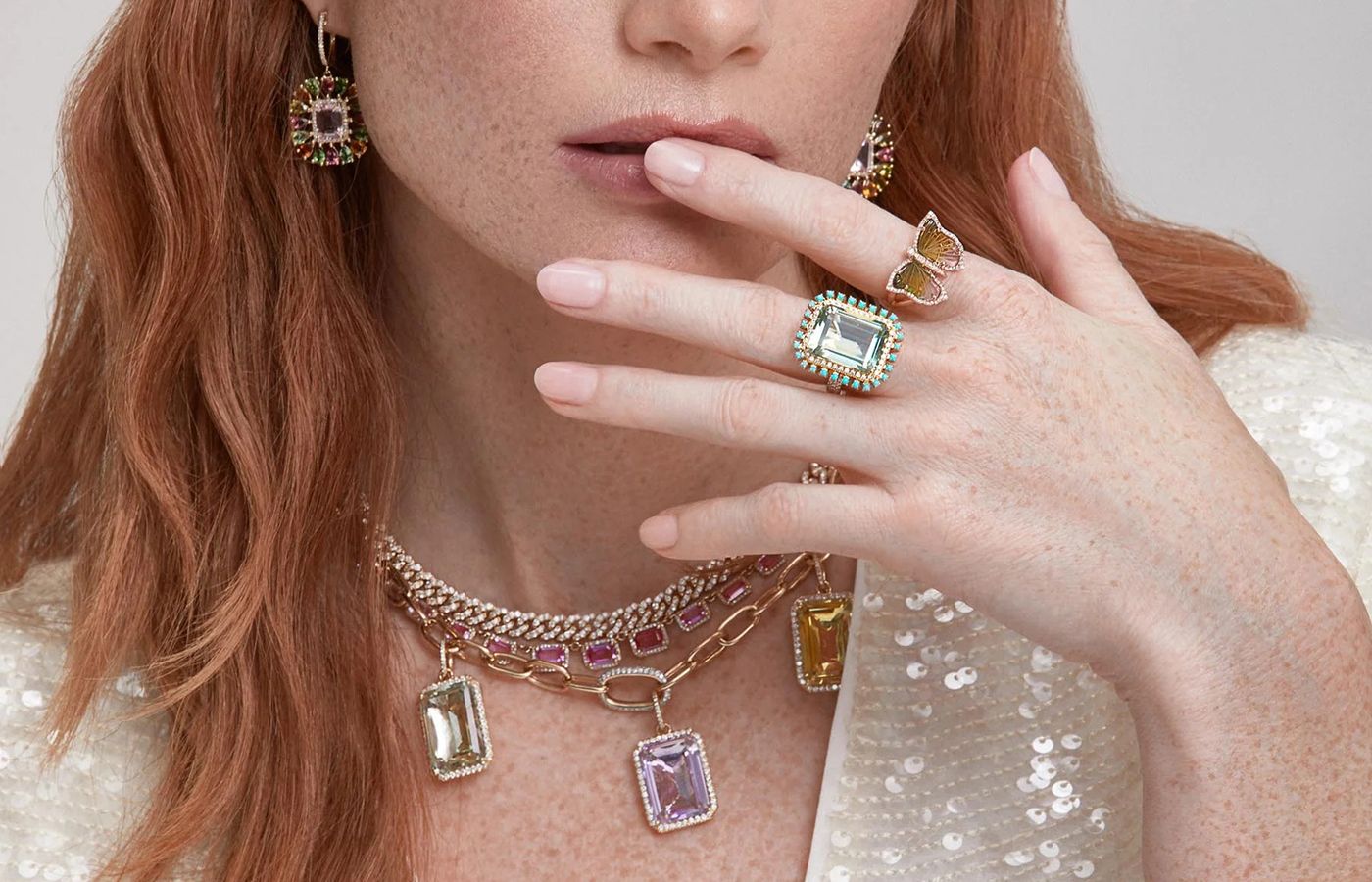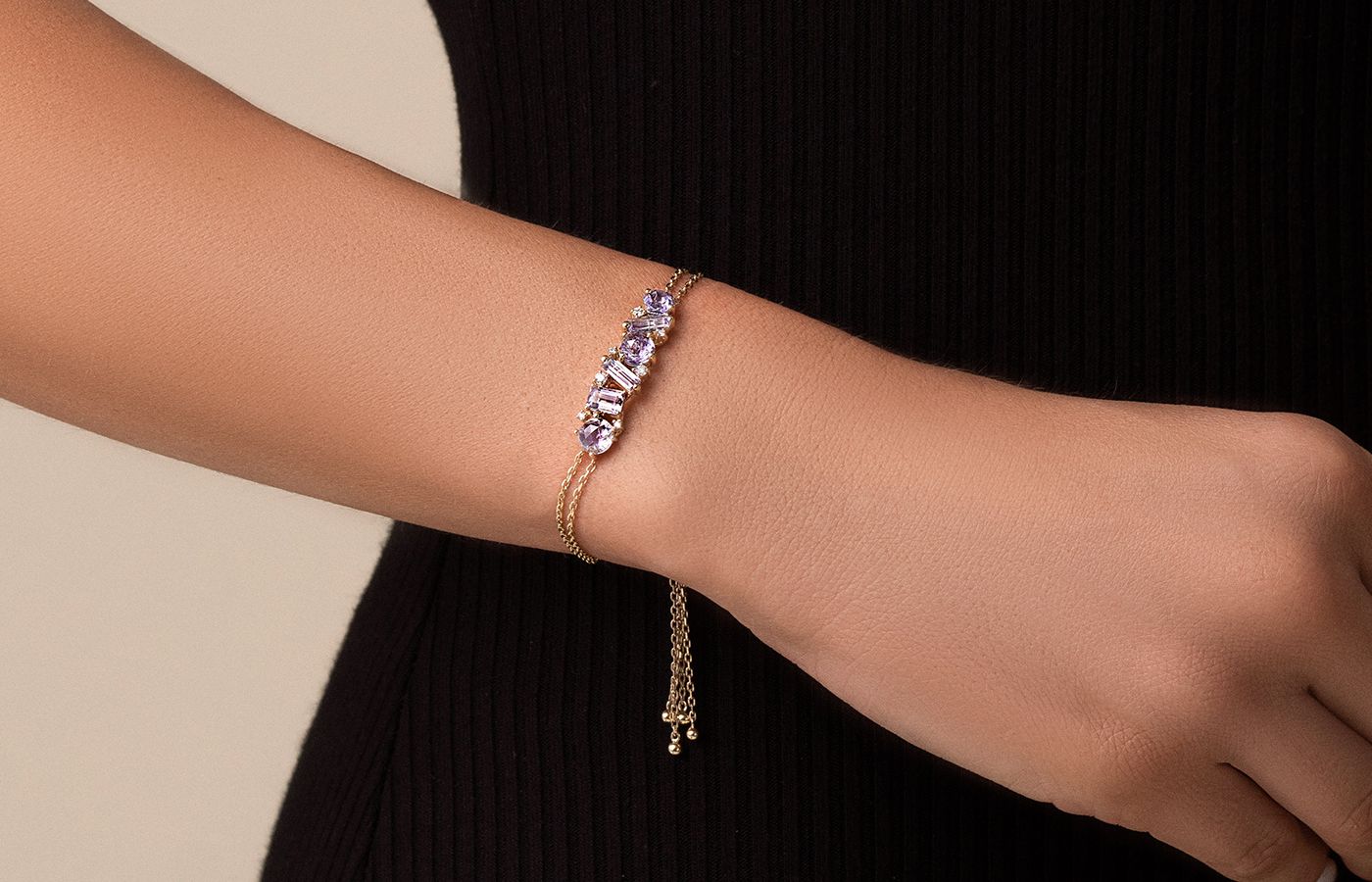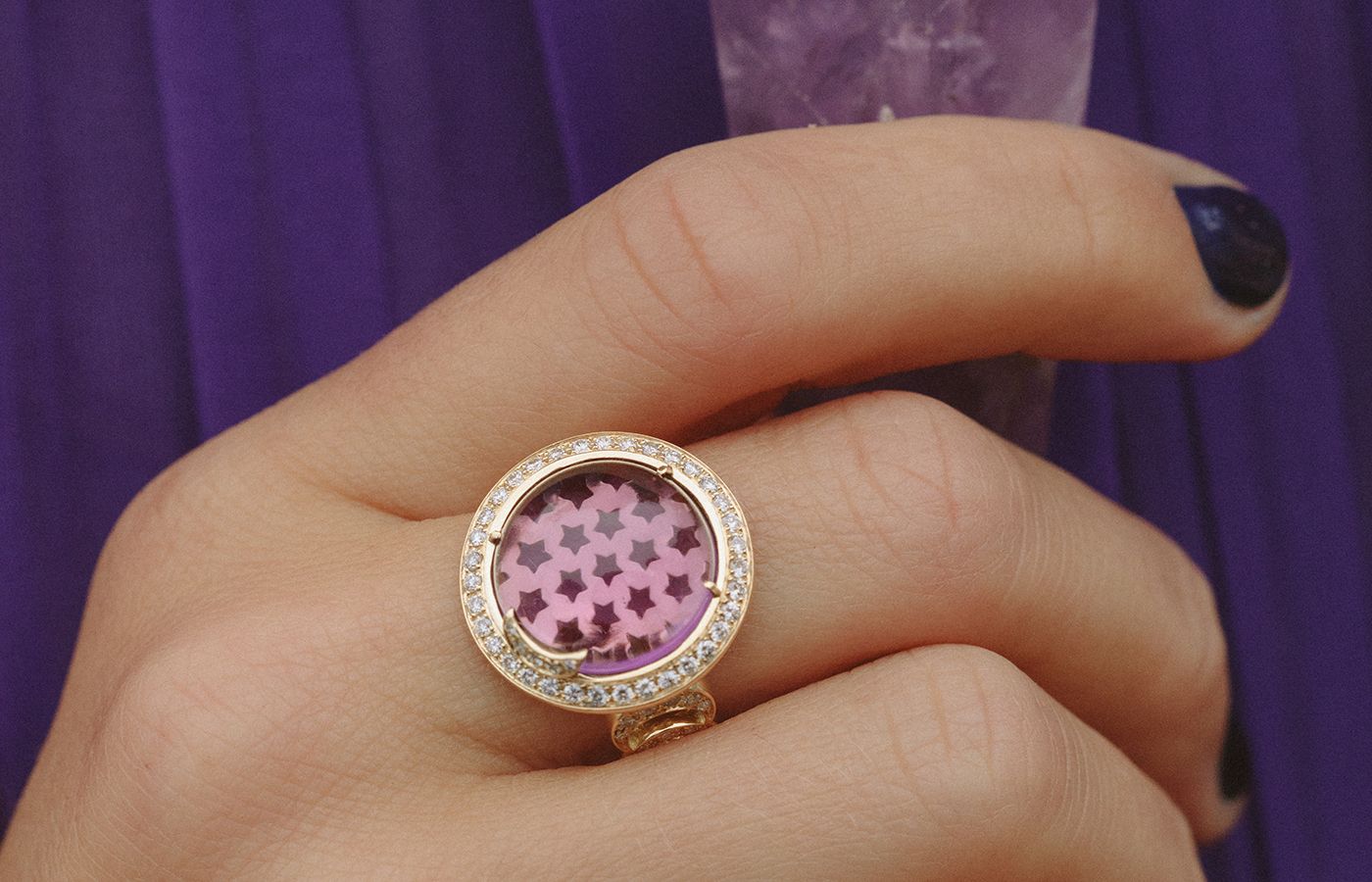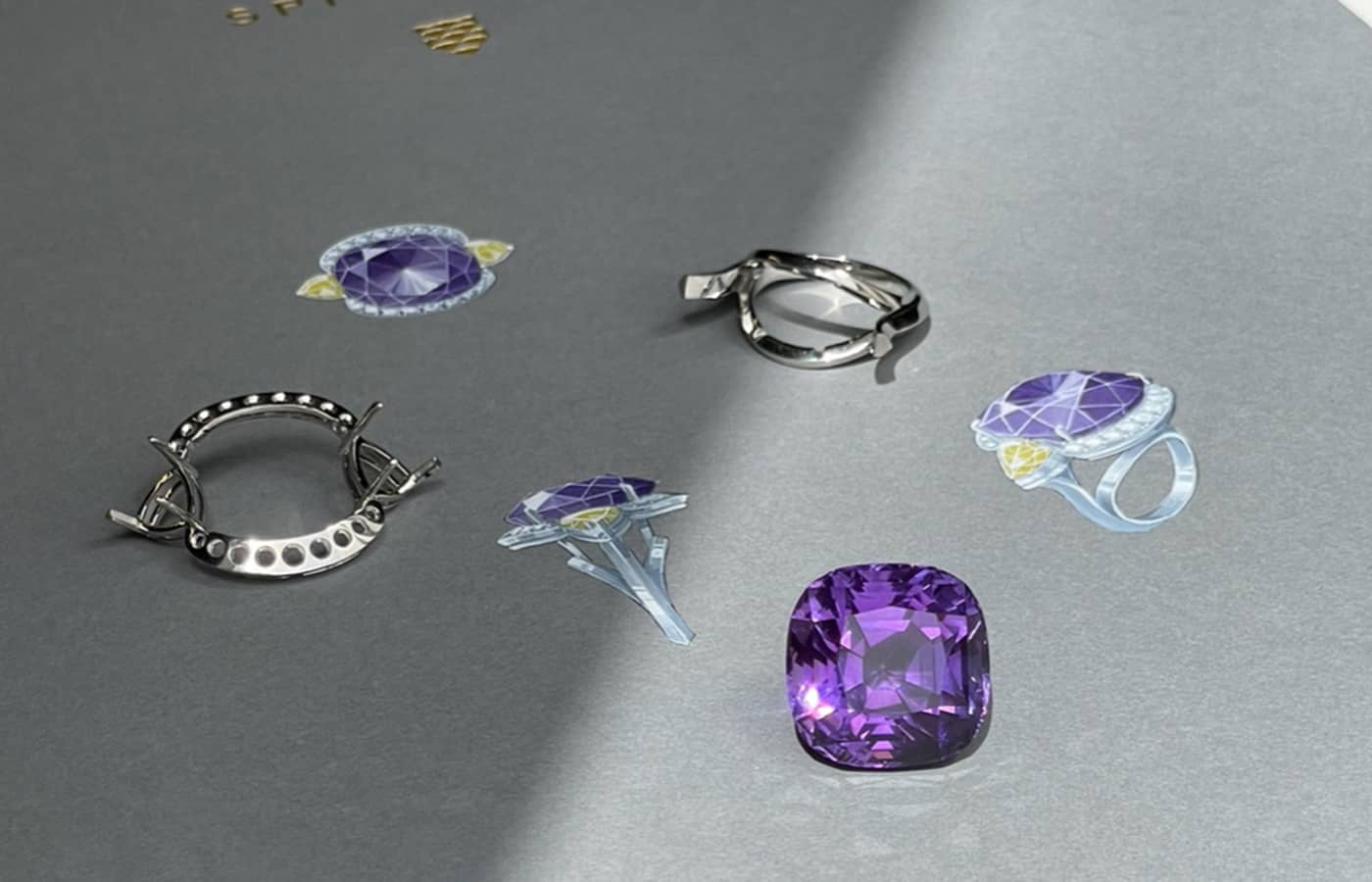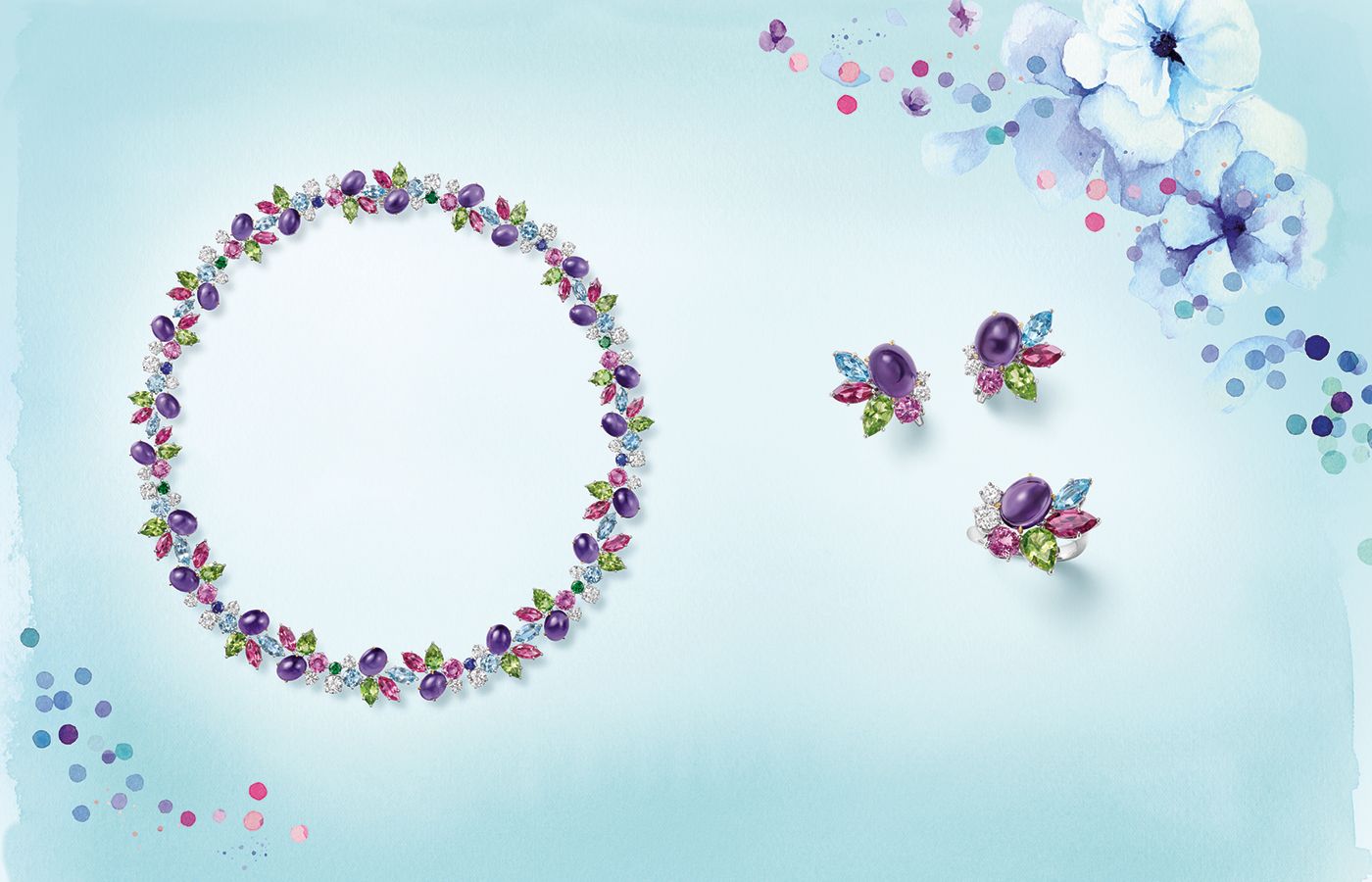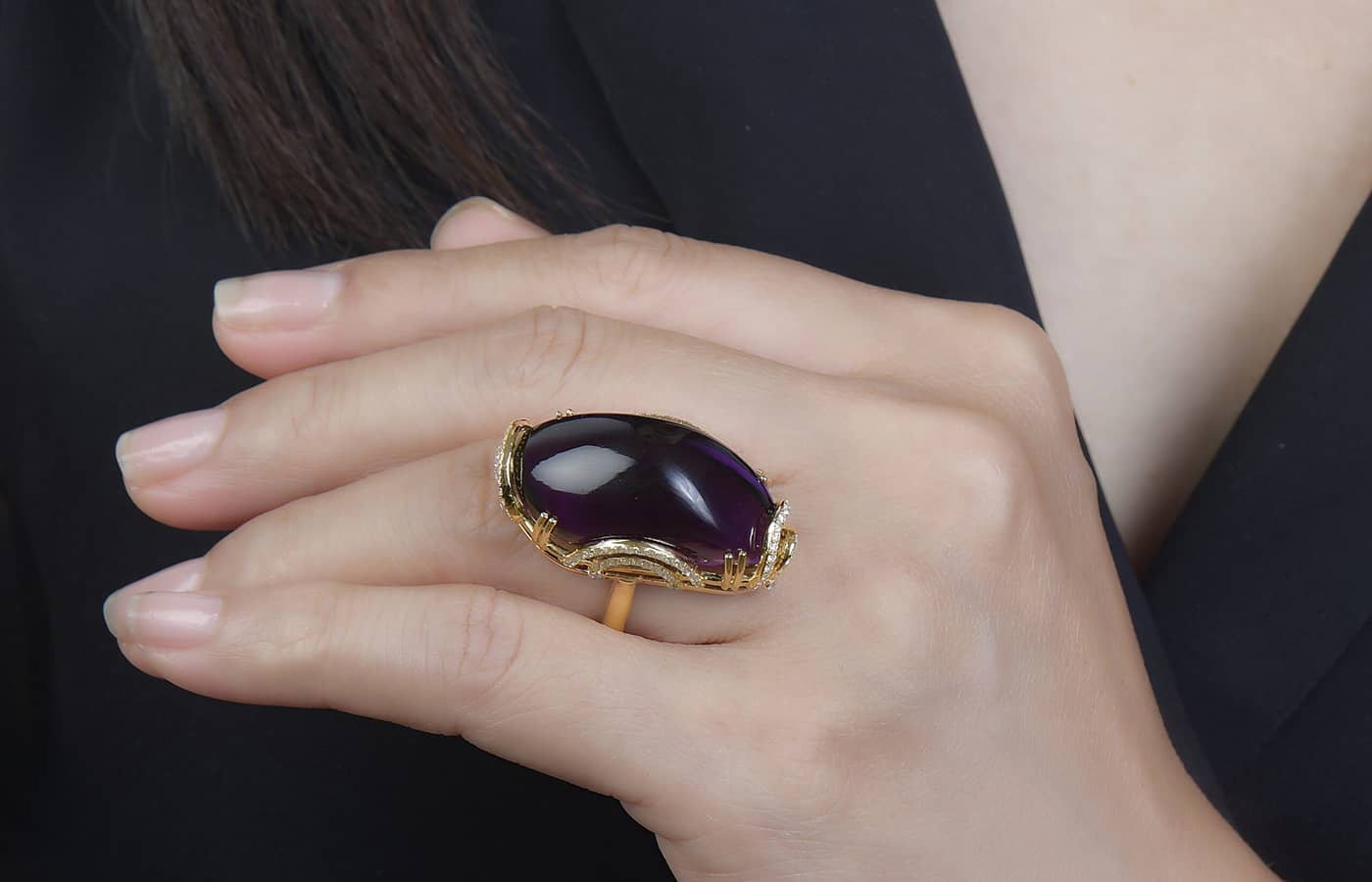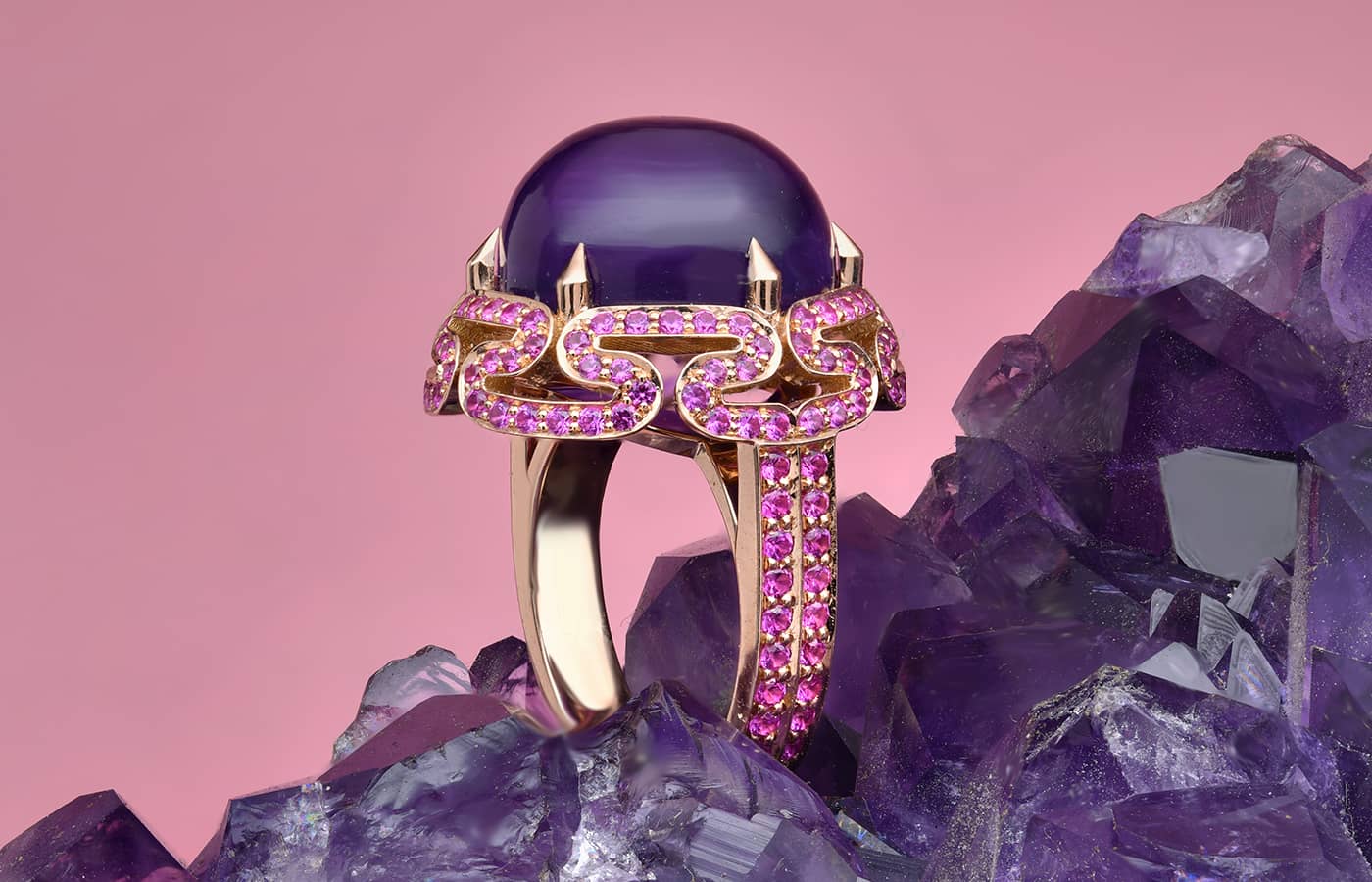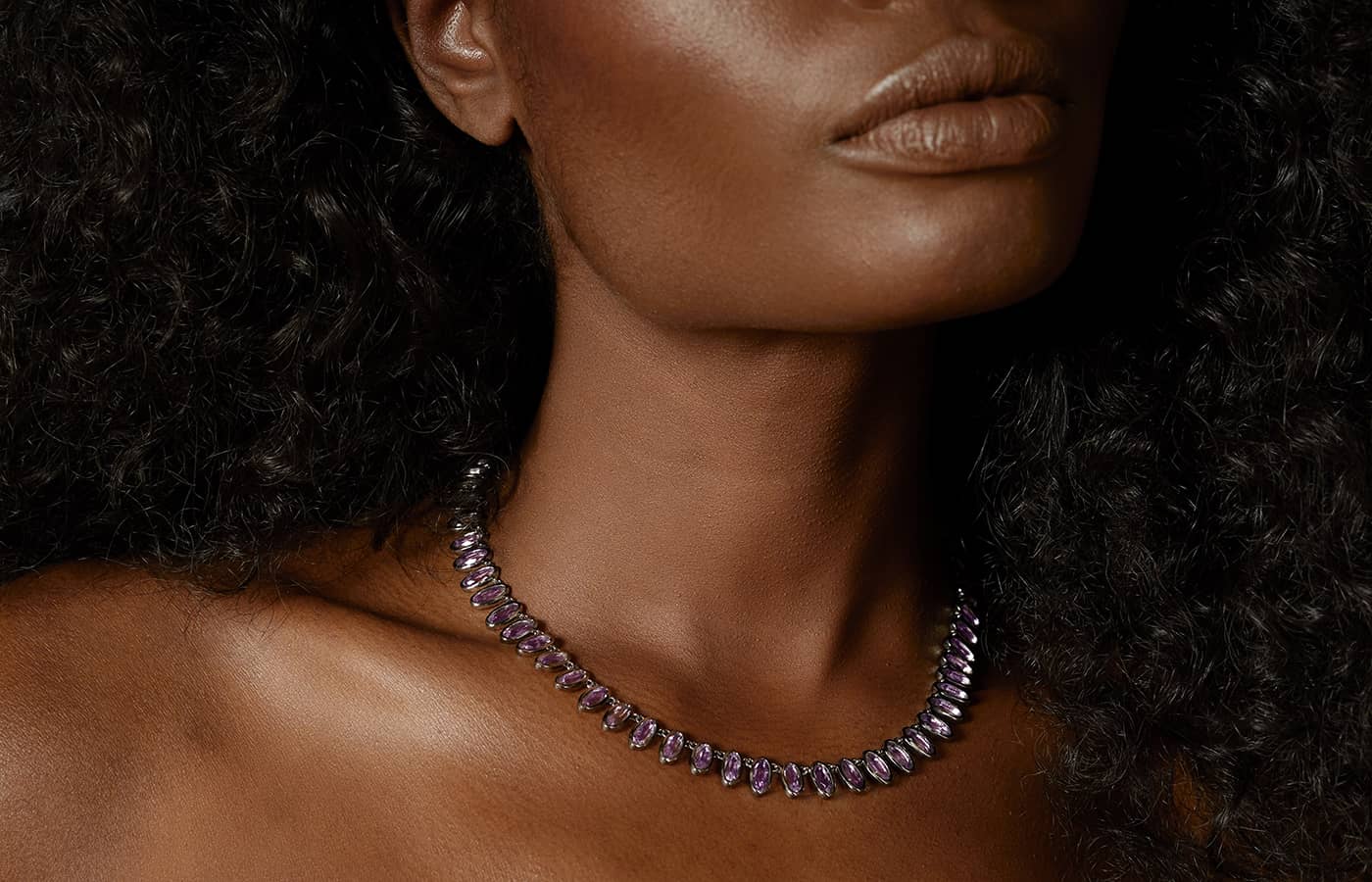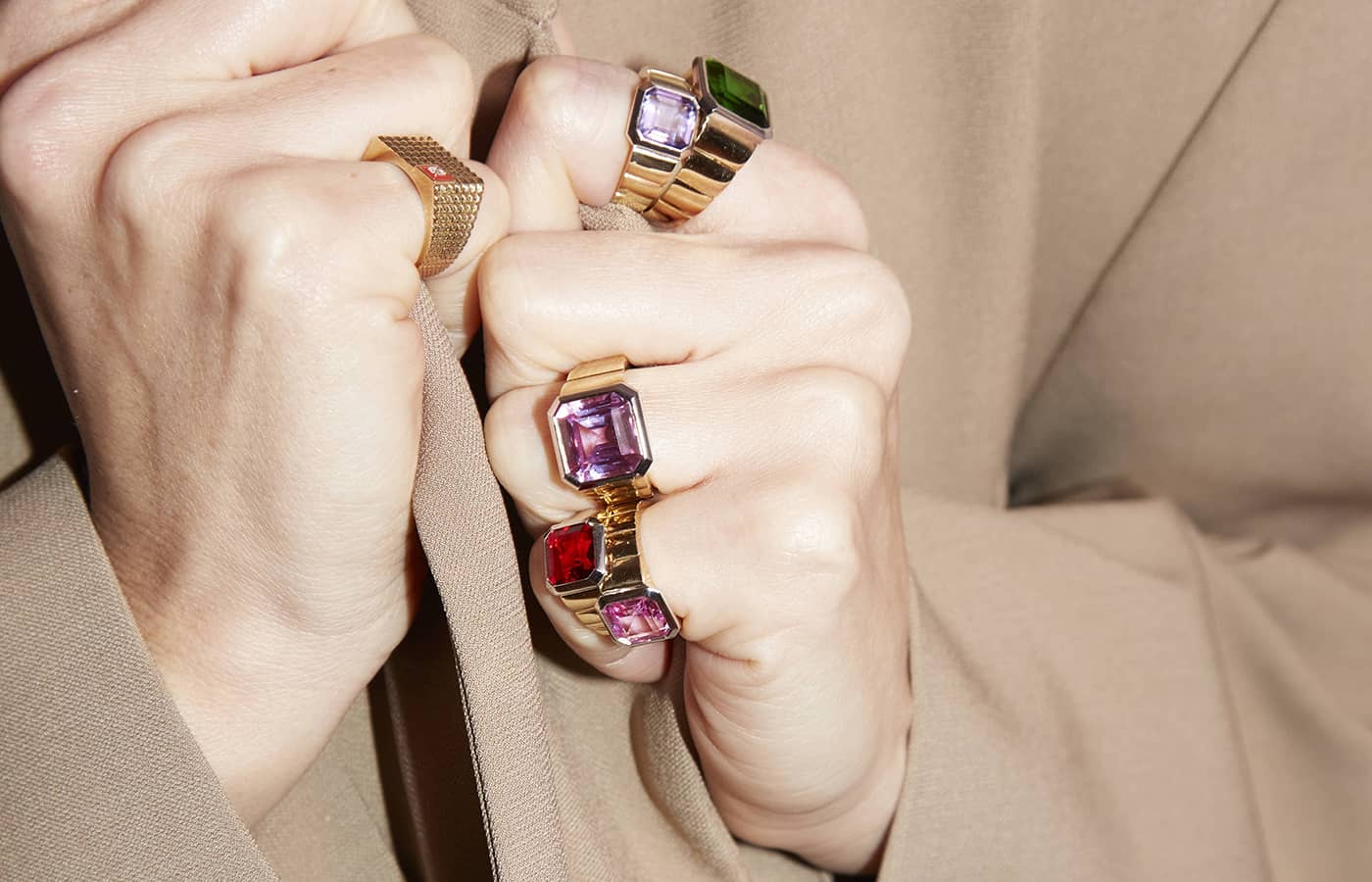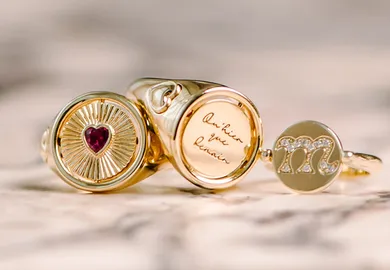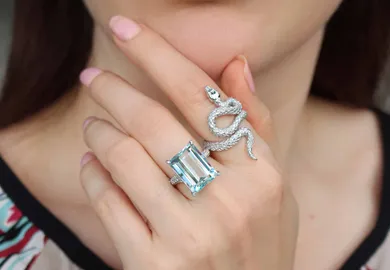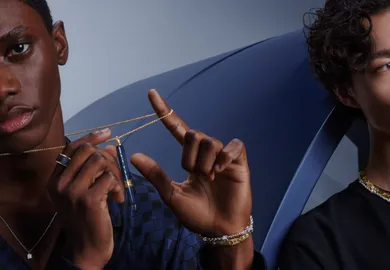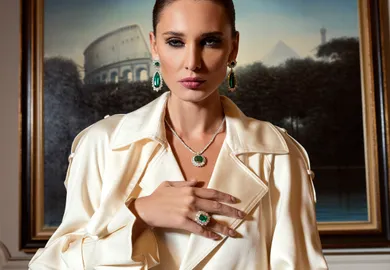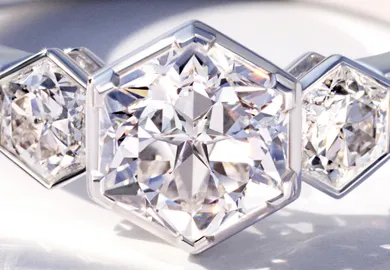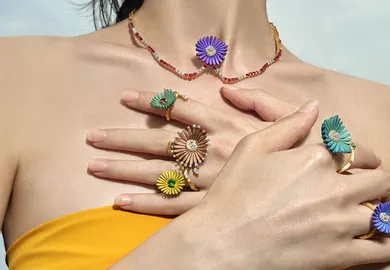
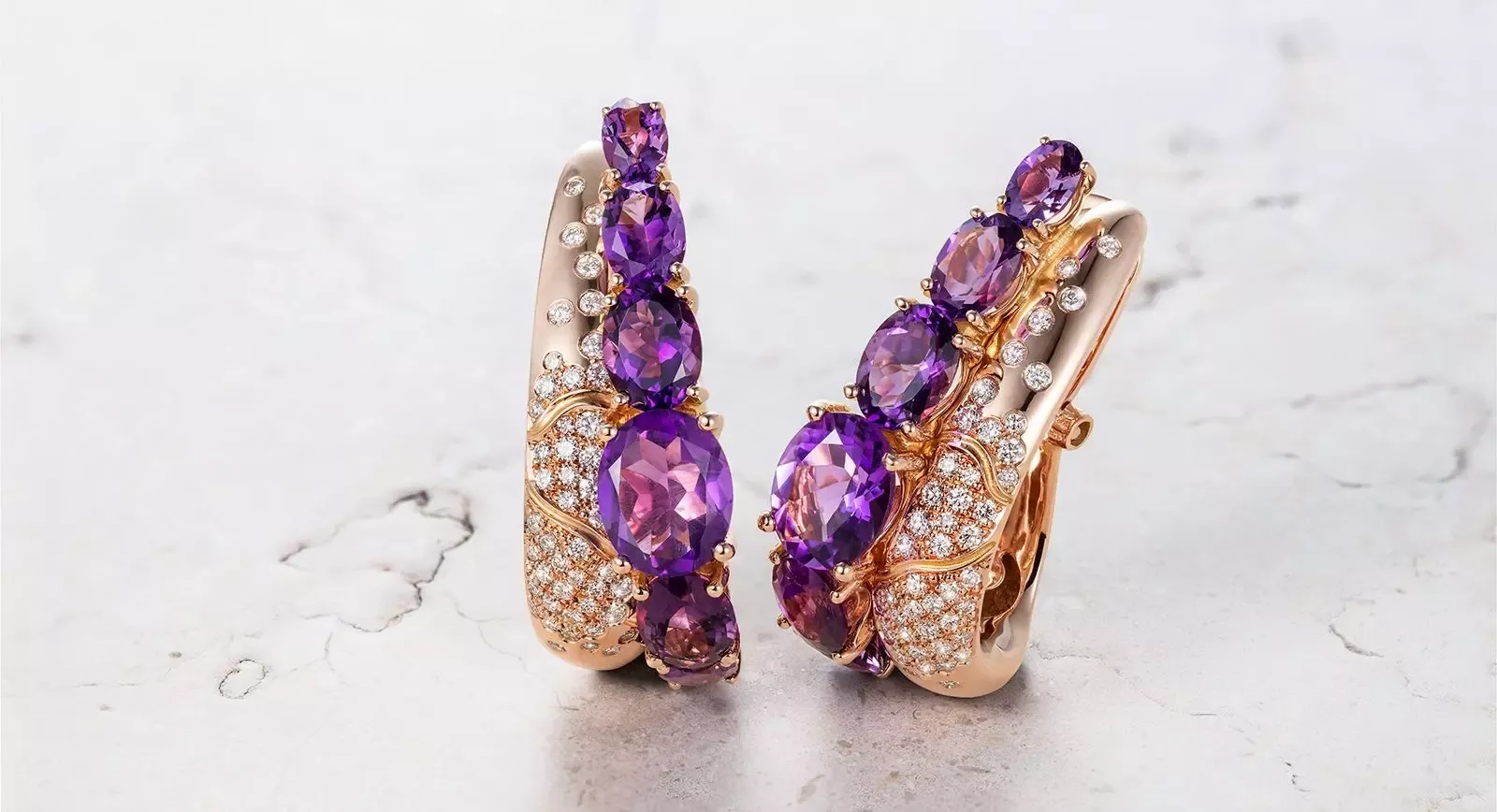
Legends About Amethyst: The Gem of Sobriety
Amethyst (from the Greek “amethystos”, meaning “not drunken”) is widely known for its ability to prevent intoxication. Is that something you’ve heard before? Do you know where it comes from? I shall tell you and share some of my favourite amethyst jewellery designs for good measure…
Long ago, in Ancient Greece, wine was not quite like what we drink today; it was very thick, syrupy and strong. To ensure it would keep for longer, a kind of pin resin known as turpentine was added to it. However, the Greeks didn’t understand that this cocktail could cause drunkenness in minutes. The ethical norms of that time stipulated that being drunk was shameful behaviour, so to solve this problem, wine was diluted with water. The violet shade of amethyst was used as an indicator of the optimal concentration: diluted wine is paler, similar to the colour of purple quartz and, correspondingly, less intoxicating.
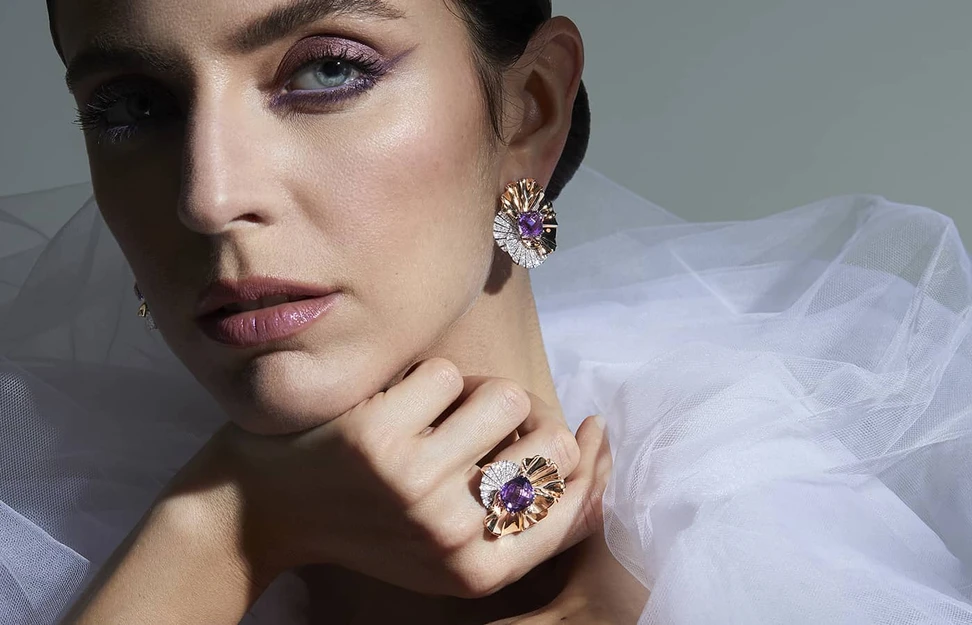
Model wearing gold, amethyst and diamond earrings and ring by Palmiero Jewellery Design
There is another legend associated with amethysts and sobriety. This story also comes from Ancient Greece, alleging that Artemis, the goddess of hunting, saved a nymph, Amethystos, from the advances of Dionysus, the god of wine. He was in love with Amethystos, but she refused him because she was enamoured with Sirikos, a handsome shepherd and musician.
In his anger, Dionysus pursued Amethystos and decided to overcome her by force. To save herself, the nymph started to call for Artemis, the protector of innocence. The goddess came to help and had already prepared her bow to fire arrows at Dionysus, but then she remembered that Zeus did not tolerate such disputes on Olympus. So as not to anger the god of thunder, Artemis contrived to turn the nymph into a crystal of violet amethyst, which fell to the ground and was lost, leaving Dionysus with nothing. Thus, in memory of Amethystos, who refused the god of wine and merriment, the stone was considered a means of avoiding drunkenness, encouraging common sense and having good luck when hunting or participating in sports competitions.
As the birthstone of February, it is also said that Saint Valentine himself wore a signet ring set with a carved amethyst intaglio depicting the image of Cupid, the god of desire. Another famous figure, Mary Queen of Scots, was said to wear an amethyst to ward off melancholy. Aside from folklore, it is also worth noting that amethyst is one of the most ancient stones in jewellery making. It was traded among the merchants and dignitaries of Rome and Egypt while providing the perfect mineral canvas for cameos and intaglios. In the Middle Ages, it would not have been deemed unusual to see amethyst cabochons set in rings, brooches, and cloak fastenings. It was also a gemstone admired by the church, perhaps for its links to piety and humility, which is why popes, bishops and royalty wore amethyst. Examples of the gem can be found in the British Crown Jewels.
When amethysts were discovered in abundance in Brazil in the early 19th century, this led to an influx of new specimens onto the European gem market that could be afforded by the extremely wealthy and those trying to climb the social ranks. In the 1830s, Russian Emperor Alexander I presented Frances, Third Marchioness of Londonderry, with Siberian amethysts possessing a supremely covetable deep purple-red hue. This no doubt fuelled the desire for amethysts at all social levels.
Interestingly, amethyst had fallen out of favour by the early 20th century. It is not something we see in Art Deco designs, for example. However, after World War II, there was an amethyst revival in ‘Retro’ jewellery, with an emblematic piece being a Cartier amethyst, turquoise and diamond collar acquired by the Duchess of Windsor, Wallace Simpson, in 1947.
To this day, amethyst maintains its status as one of the most popular gems due to its abundance, colour and accessible price. It can be readily purchased as faceted gemstones, rough crystals and geode clusters. It is a member of the quartz family and sits at seven on the Mohs scale of hardness. It isn’t as hardy as you might expect, so proceed cautiously when amethysts are worn in rings or bracelets.
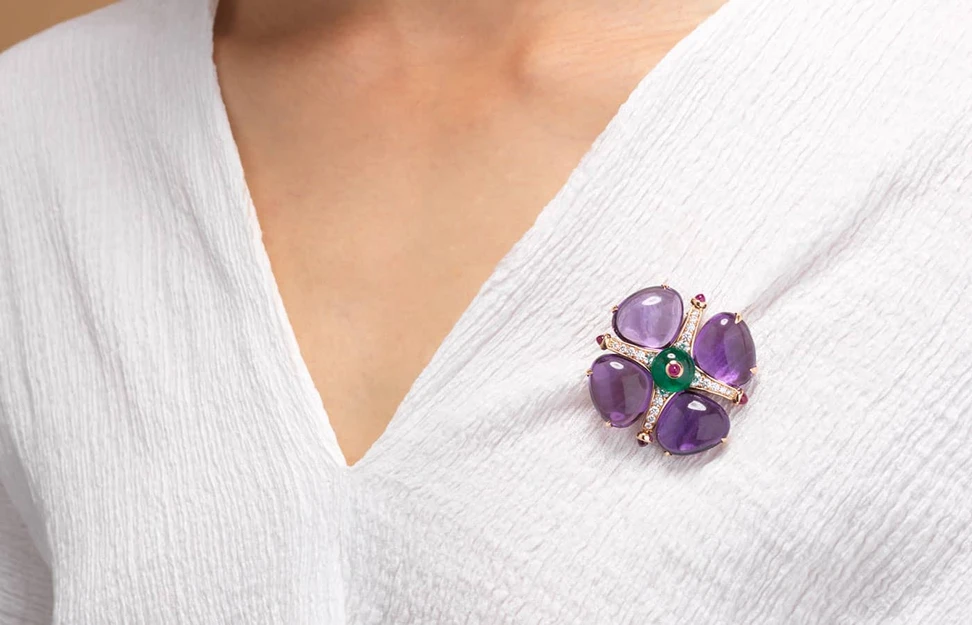
Bulgari gold, amethyst, emerald, ruby and diamond brooch
You might also be surprised to learn that the colour of some amethyst gems can fade when exposed to sunlight over time, so be careful how you store your jewels. It is also advised not to use an ultrasonic cleaner on amethyst jewels in case this interferes with small cracks or internal fractures and leads to damage. You have been warned! Legends about amethyst are some of the most fascinating that I have encountered. The idea that a humble quartz crystal can cure drunkenness (or, indeed, prevent a hangover) is a wonderful fantasy that has stood the test of time. What I know for sure, however, is that amethyst is full of characterful beauty in all its shades, whether pale washes of lilac or rich deep purple tinged with red.
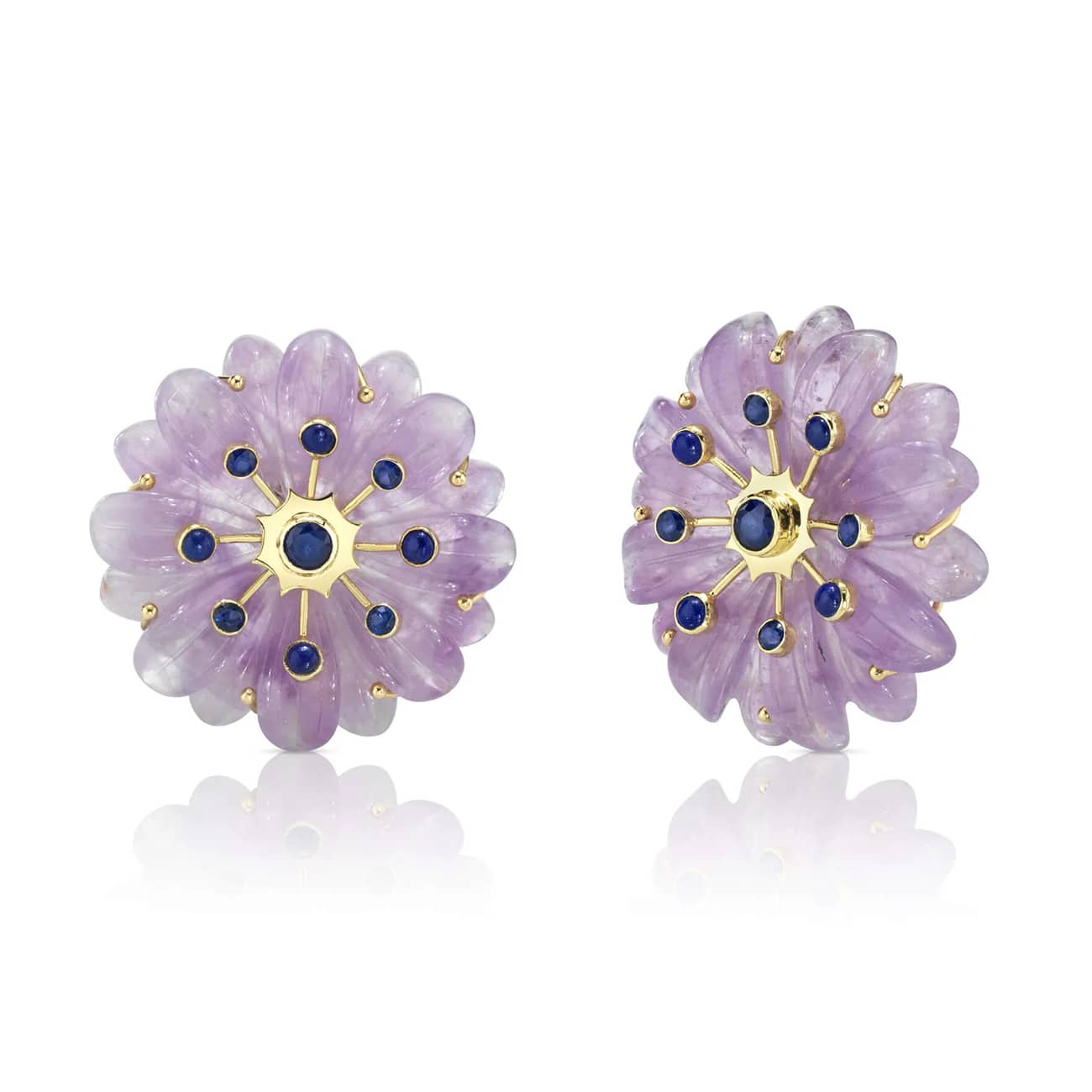
Brent Neale
Brent Neale
Gold, amethyst and sapphire earrings
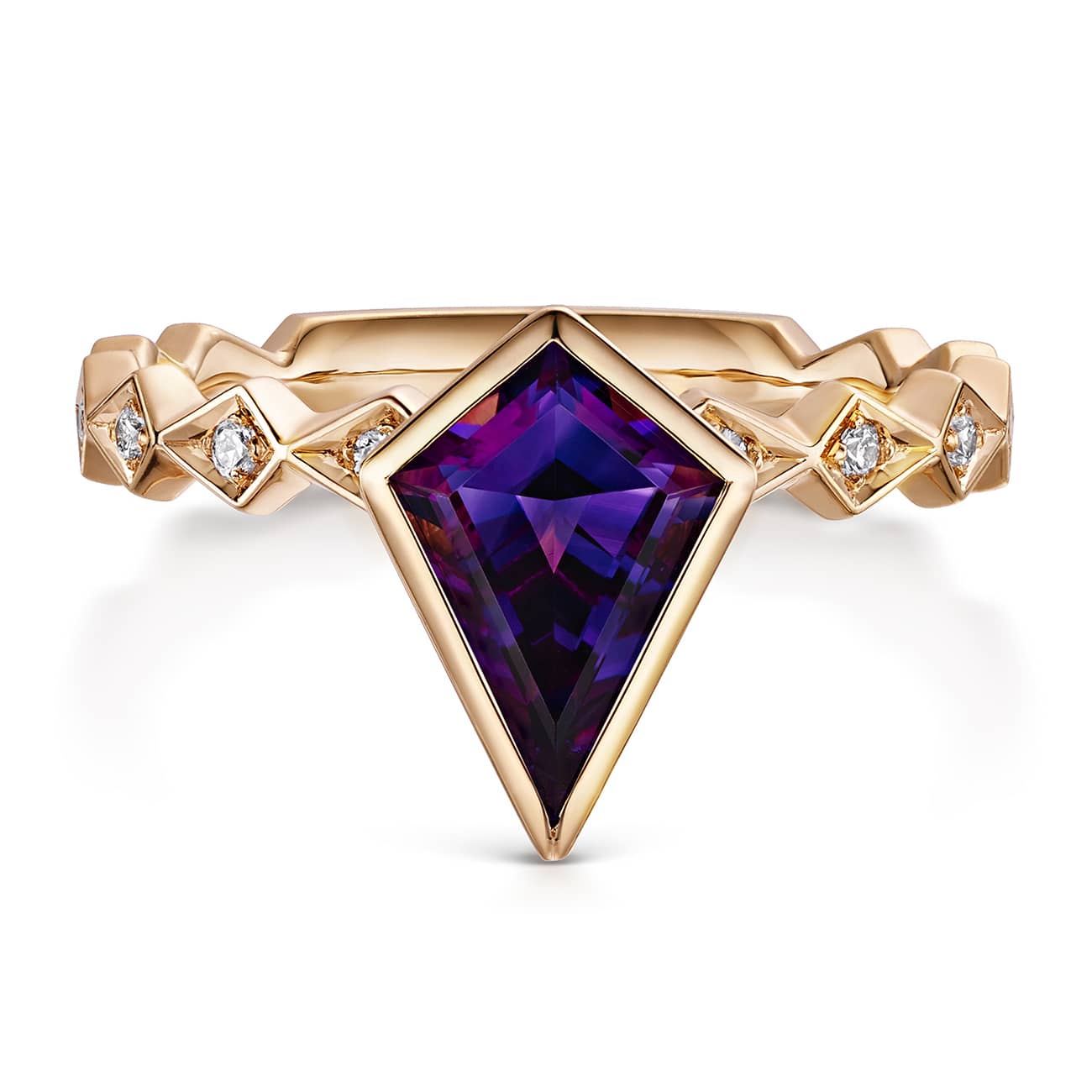
Andrew Geoghegan
Andrew Geoghegan
Lets Fly Kite ring in gold, amethyst and diamond
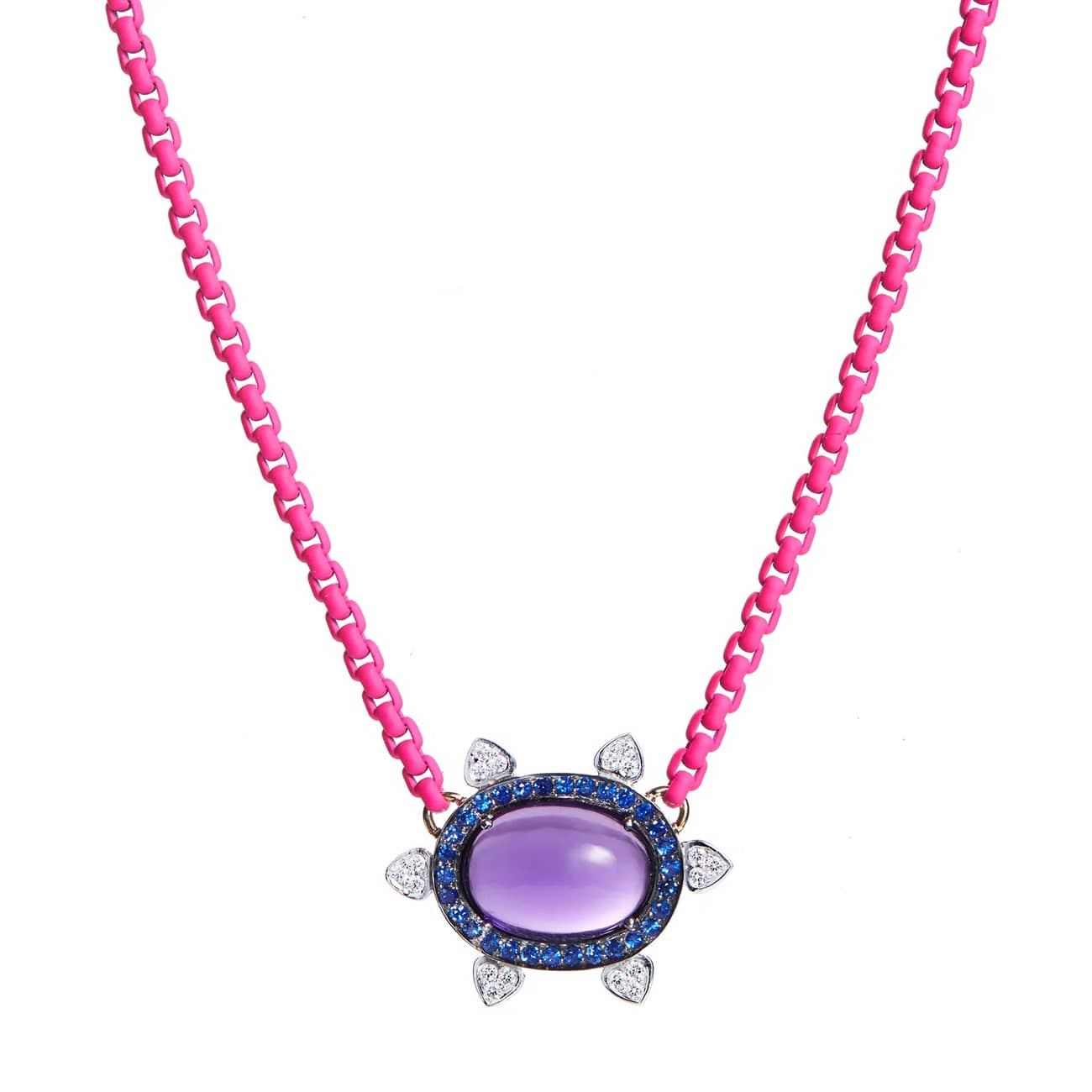
Bowen NYC
Bowen NYC
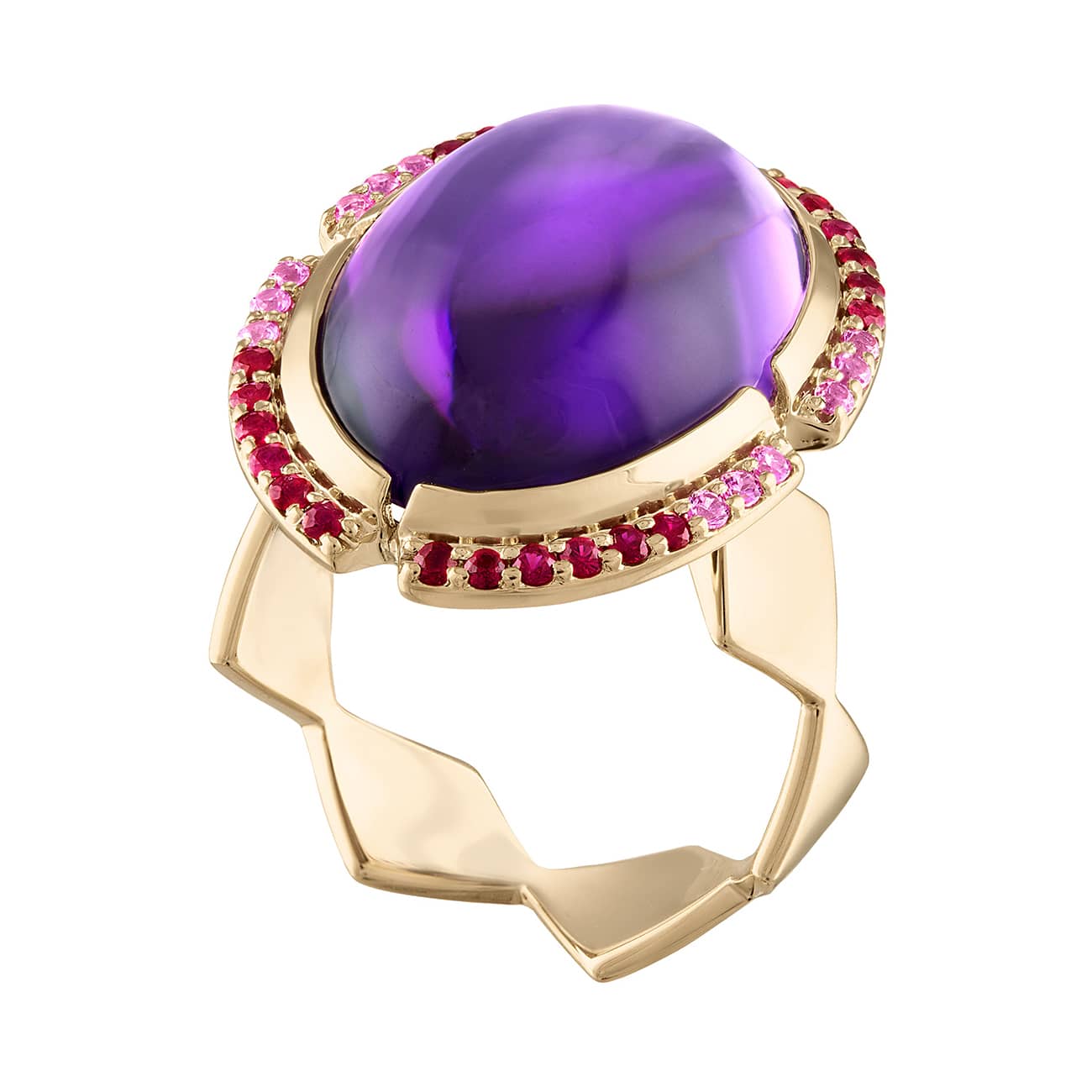
Gigi Ferranti
Gigi Ferranti
Lucia ring in gold, pink sapphire and amethyst
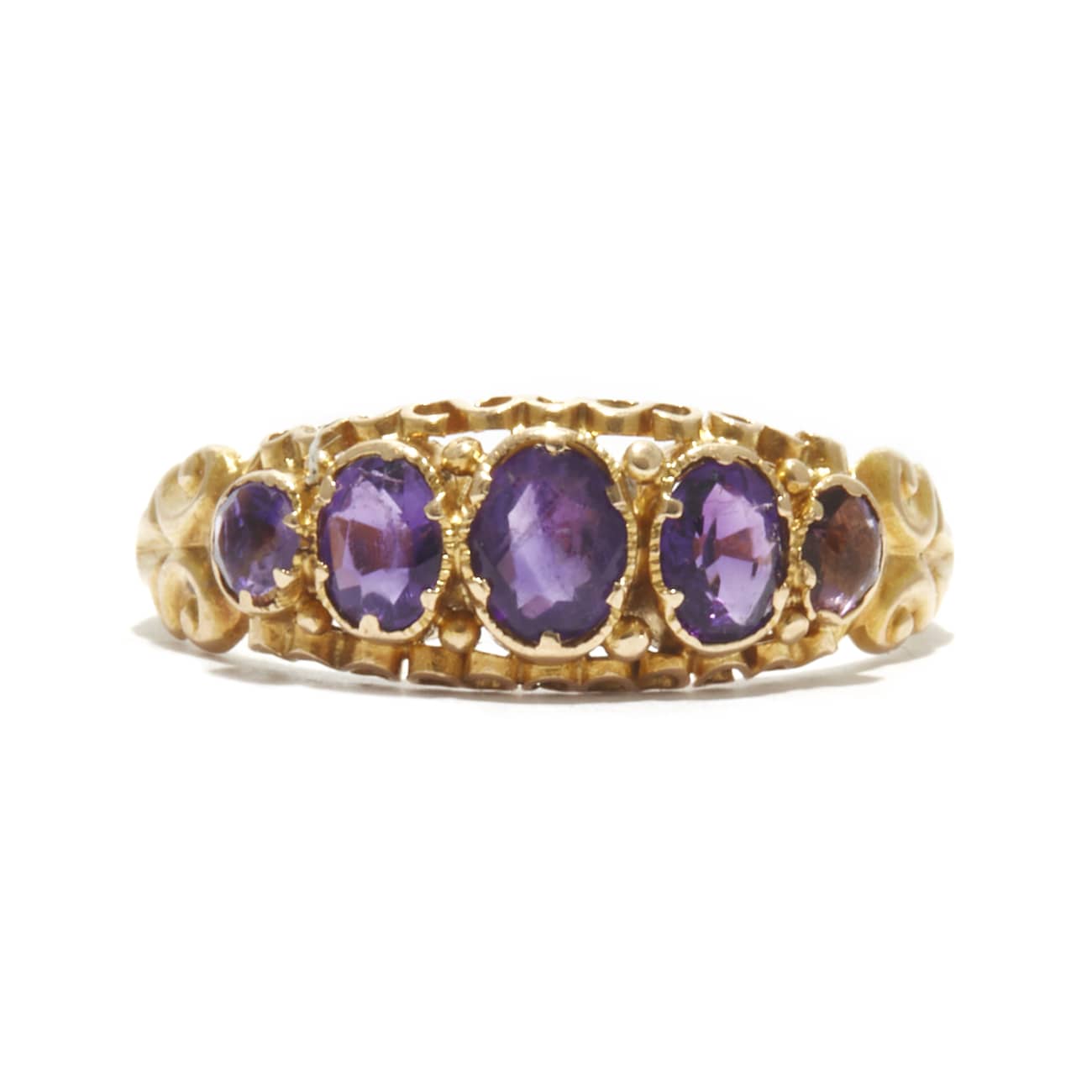
Ashley Zhang
Ashley Zhang
Antique Amethyst band in gold
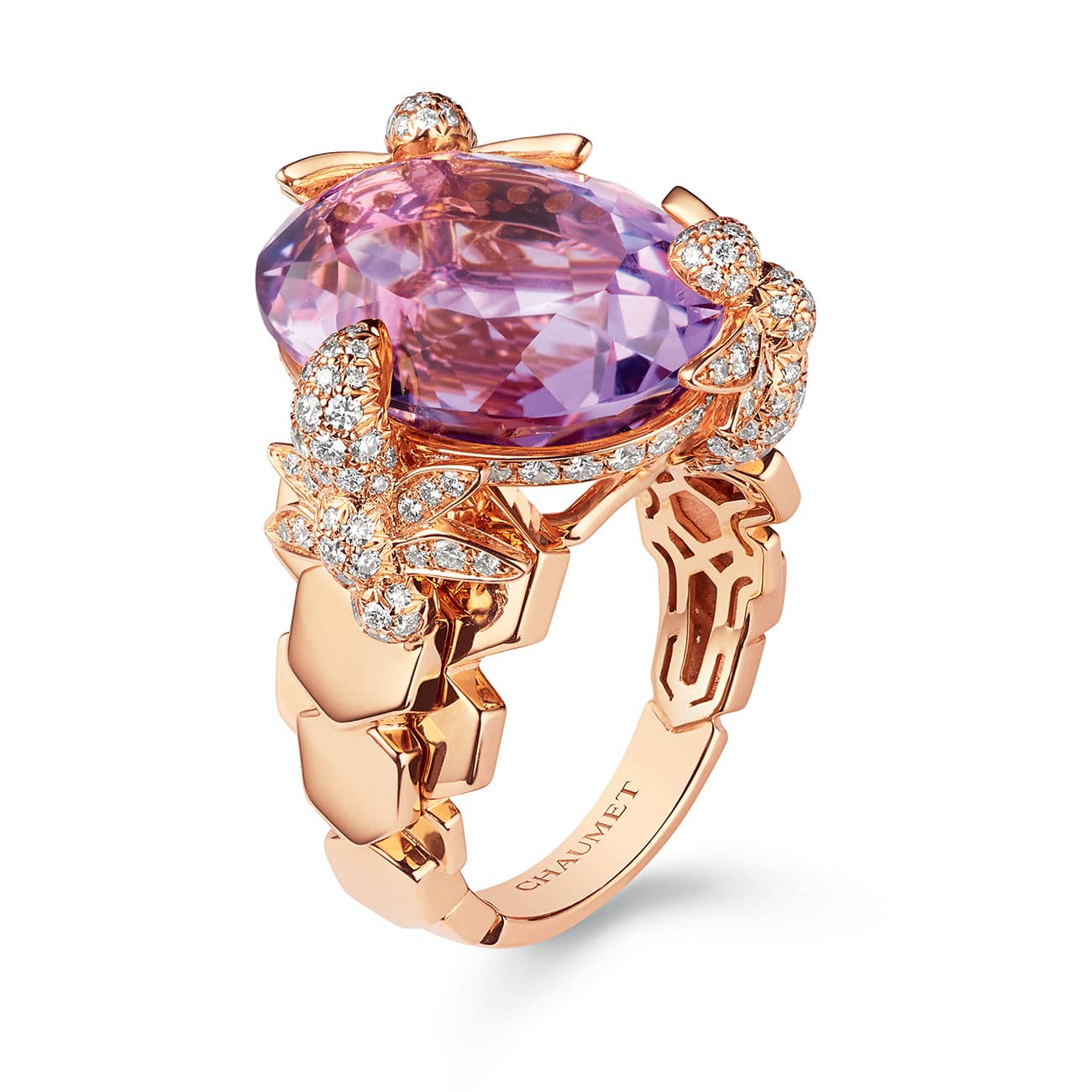
Chaumet
Chaumet
Alveole ring in gold, amethyst and diamond
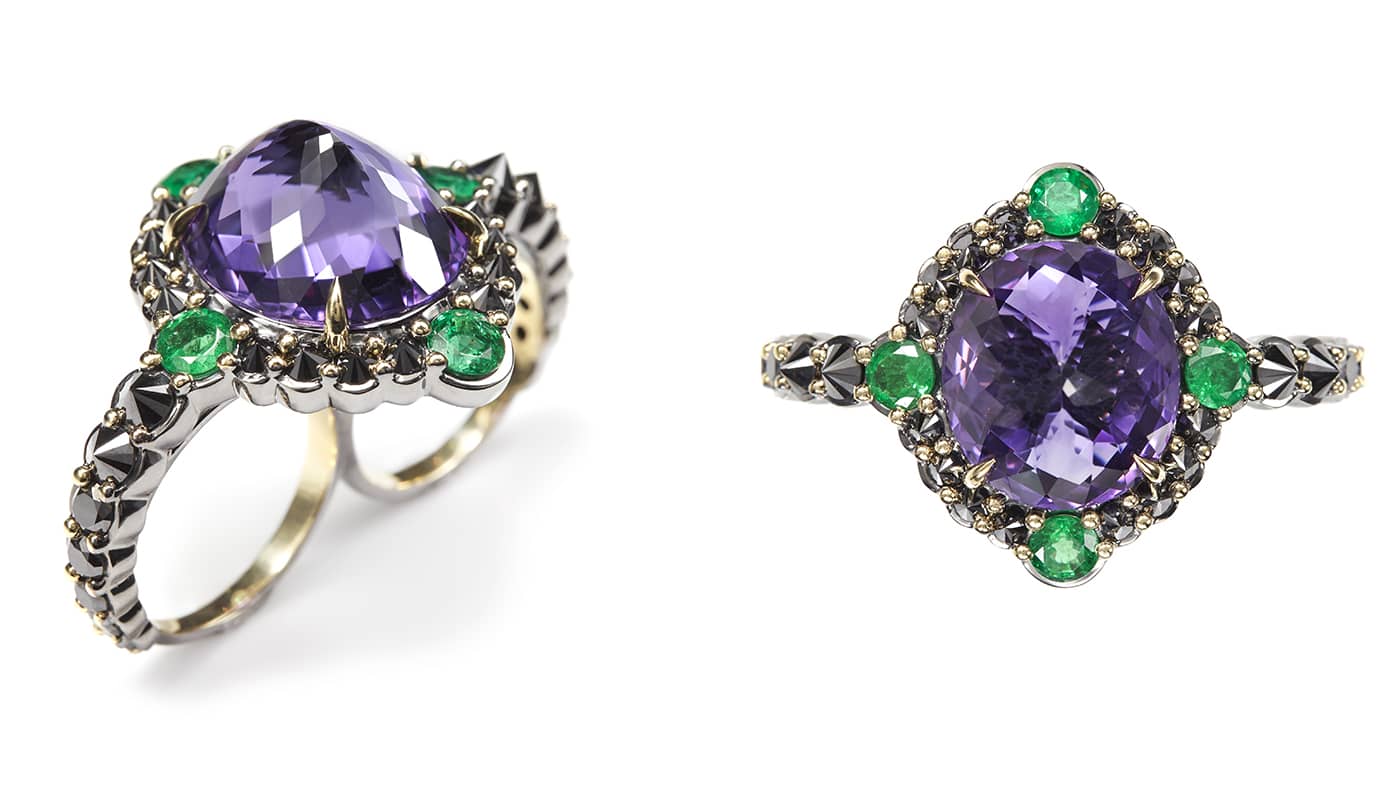
Ara Vartanian
Ara Vartanian
White gold, amethyst and emerald ring
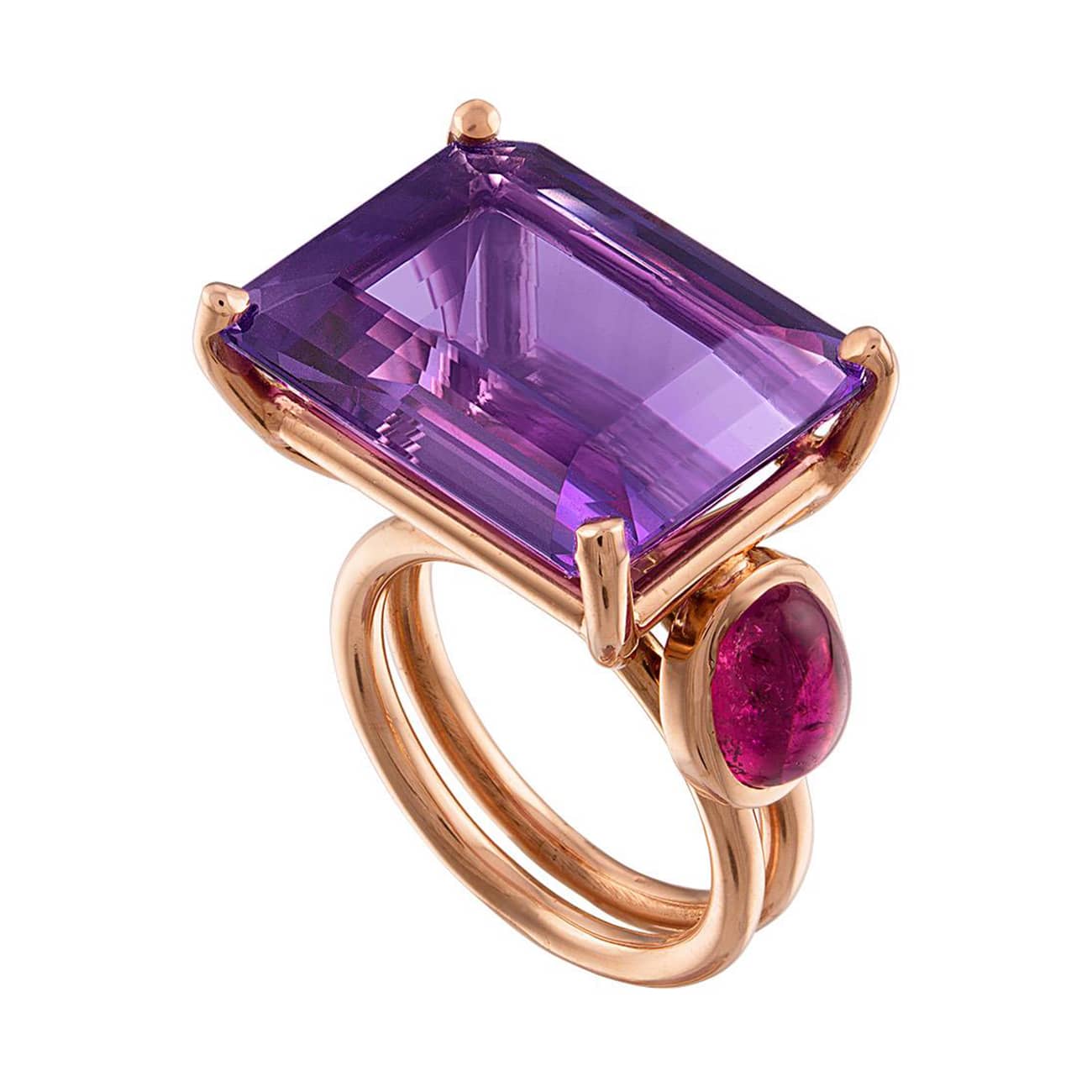
Dale Novick
Dale Novick
Gold ring featuring a 25-ct amethyst
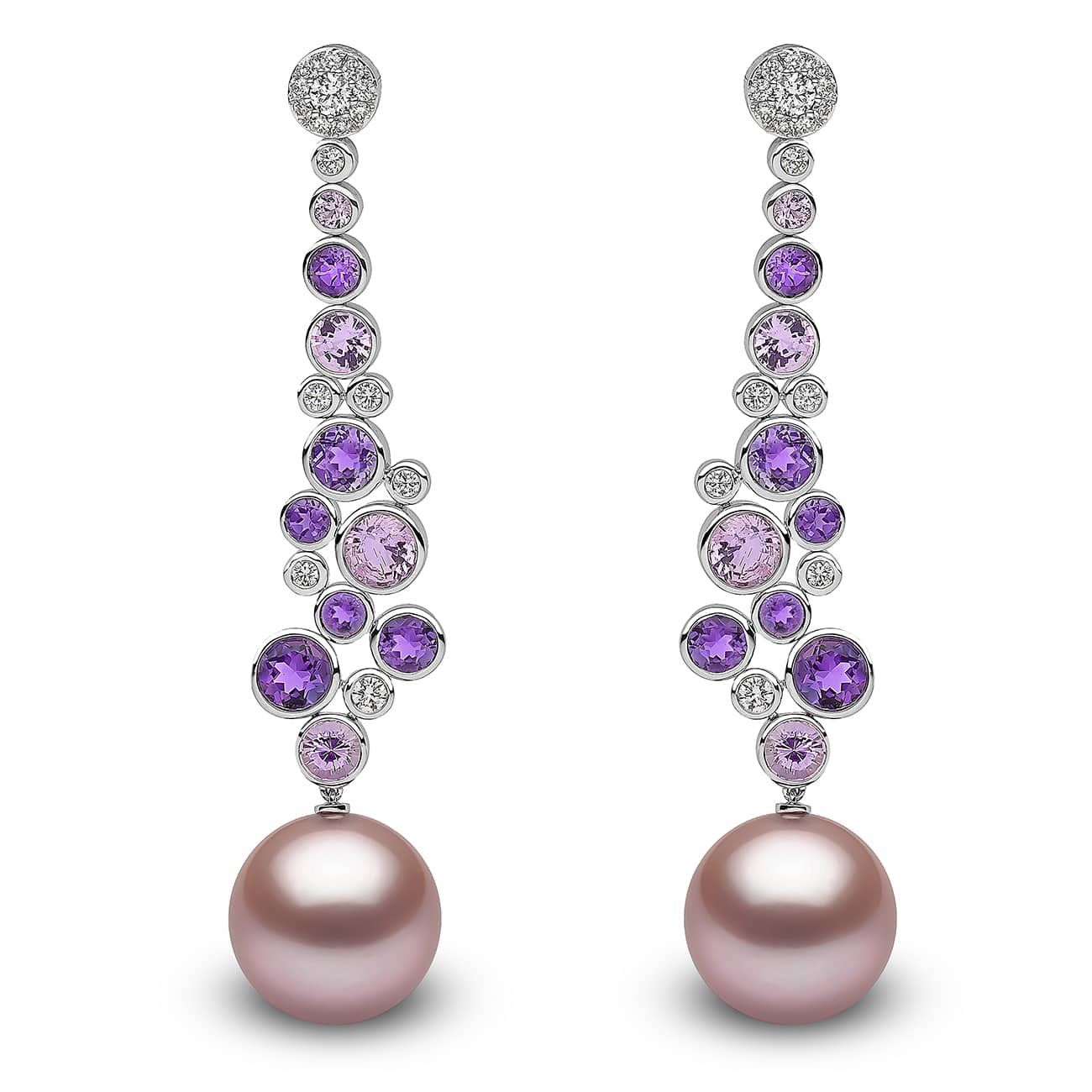
Yoko London
Yoko London
White gold, amethyst, pearl and diamond earrings
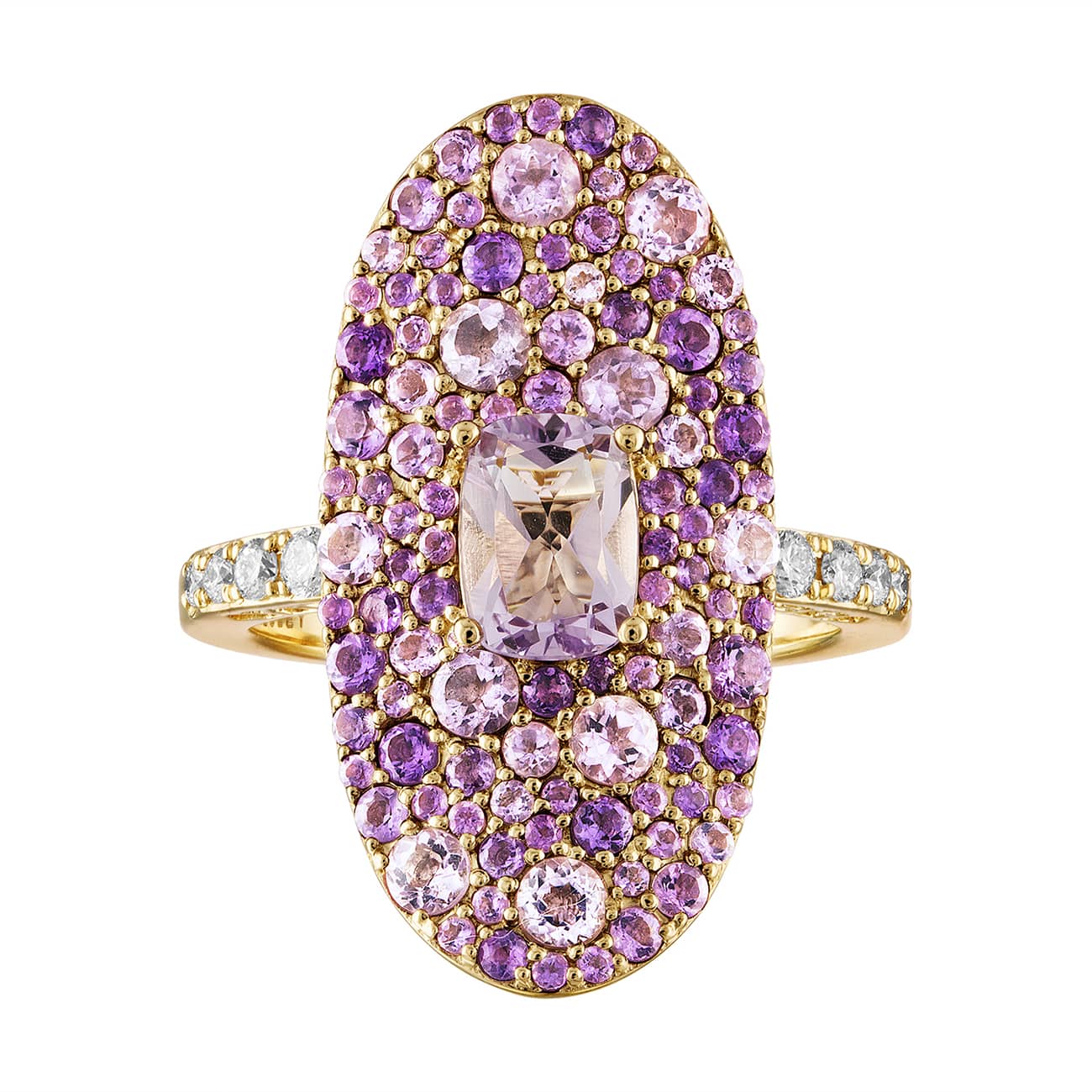
Eden Presley
Eden Presley
Gold, amethyst, coloured gemstones and diamond ring
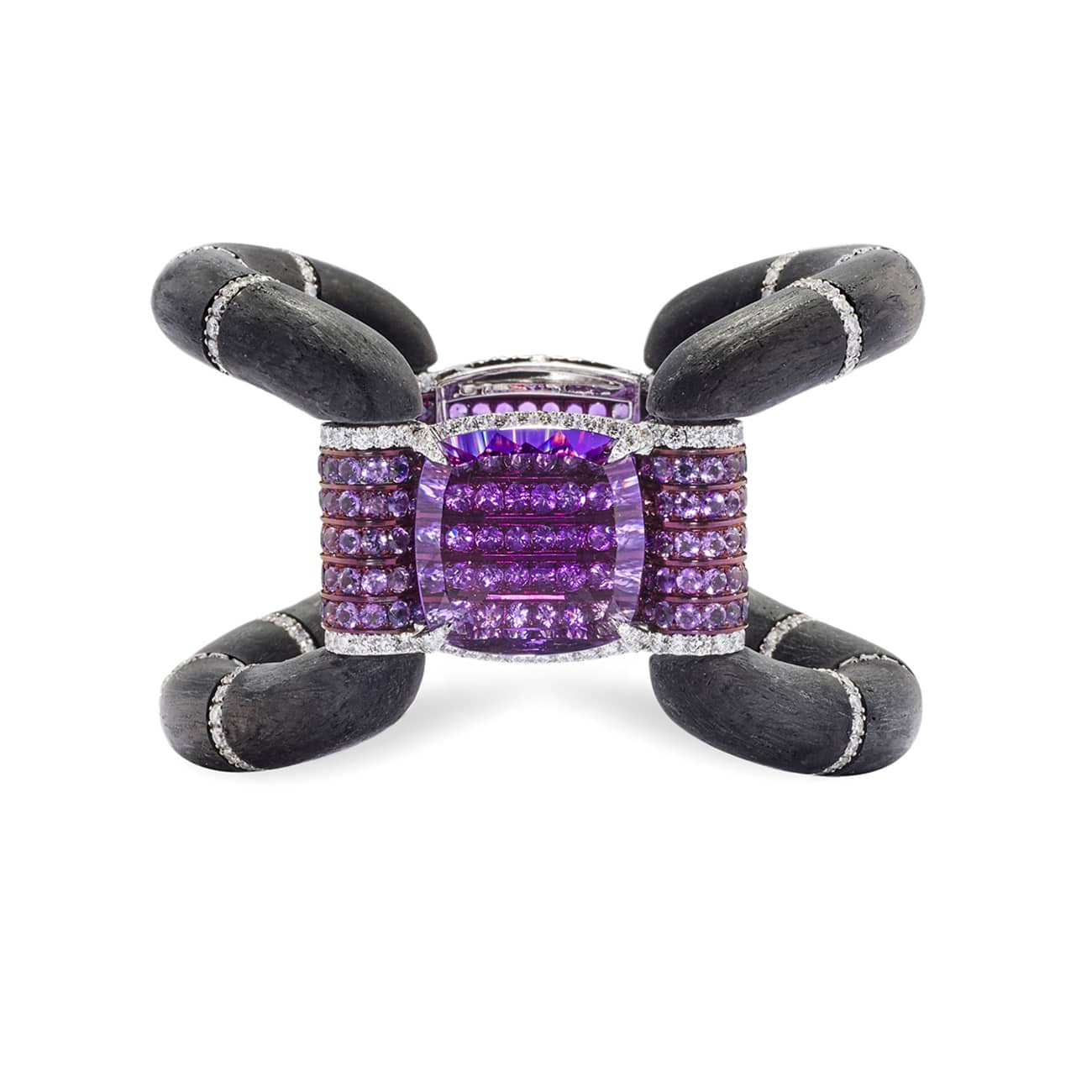
Fabio Salini
Fabio Salini
Gold, carbon, amethyst and diamond cuff
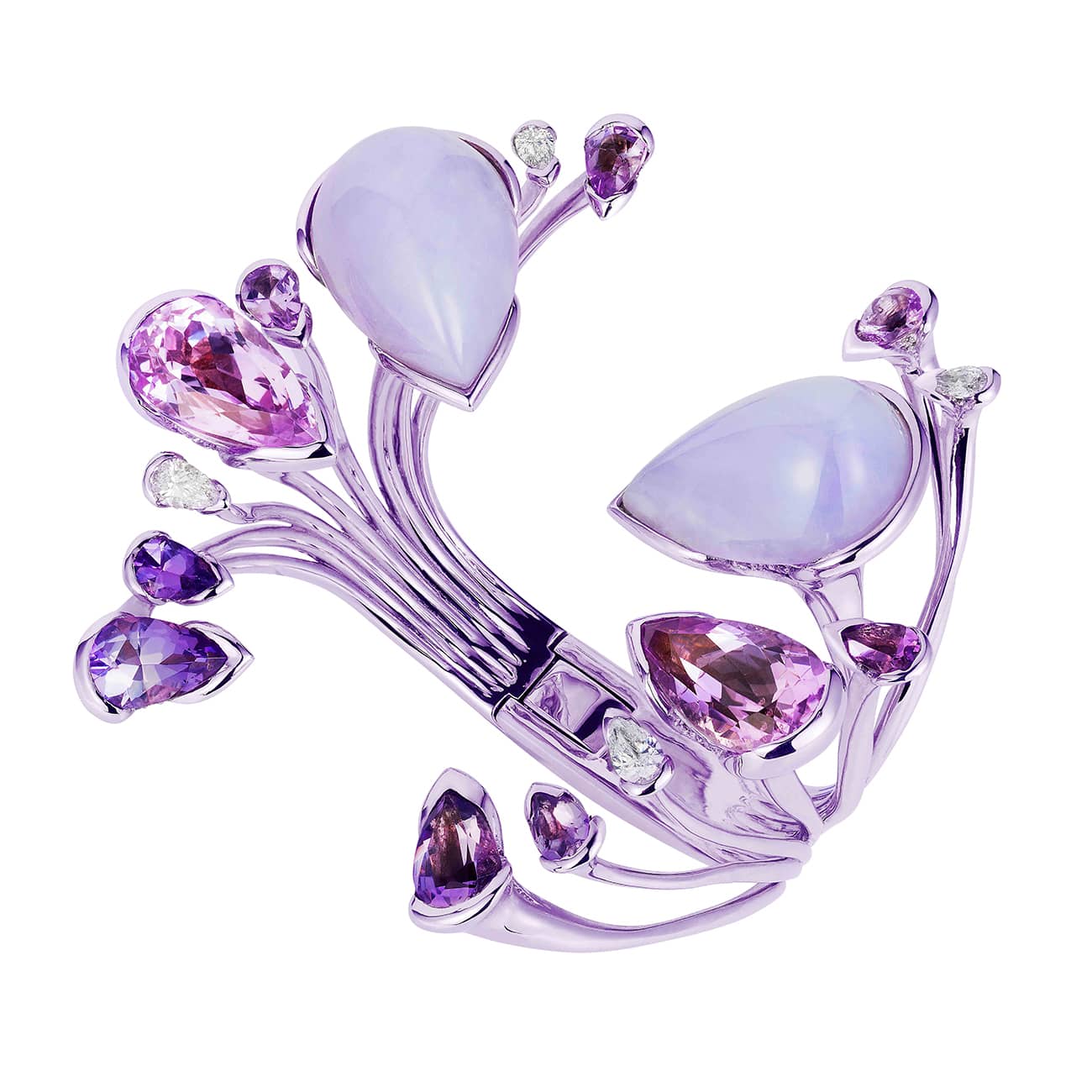
Fernando Jorge
Fernando Jorge
Orchidea Lilac bracelet in gold, amethyst, lavender jadeite, kunzite and diamond
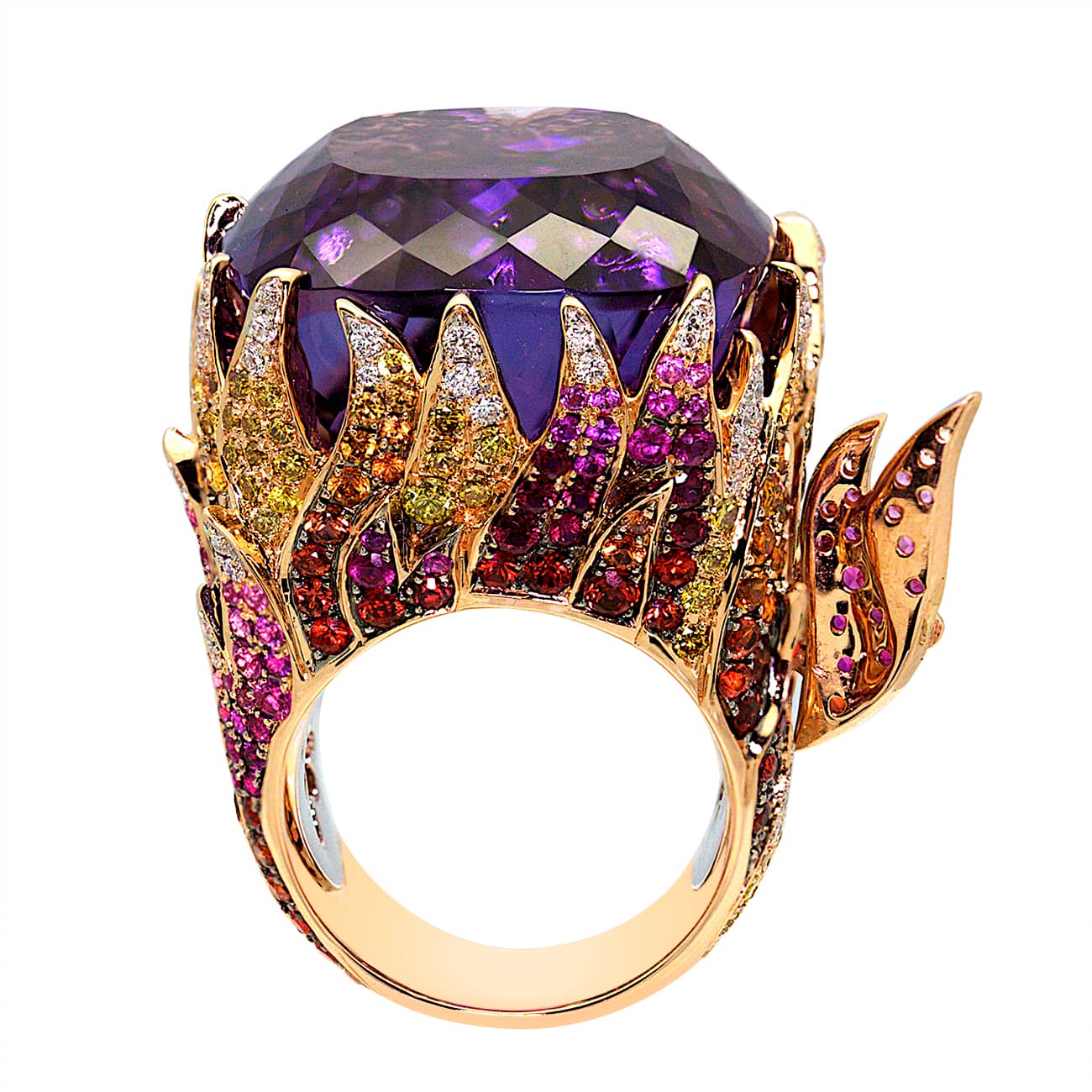
Alessio Boschi
Alessio Boschi
Flame ring in gold, coloured gemstones and amethyst
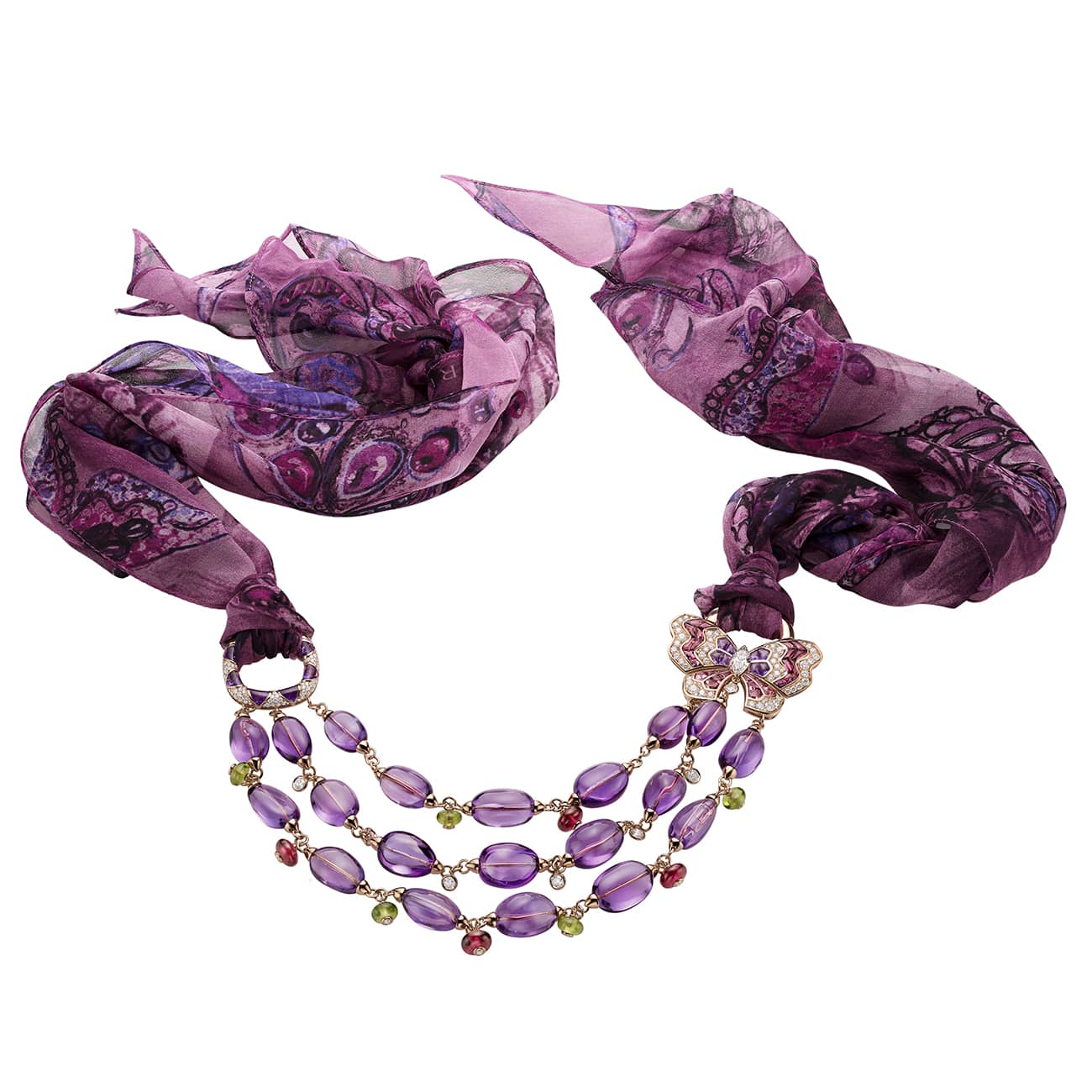
Bulgari
Bulgari
Gold, amethyst and coloured gemstones necklace
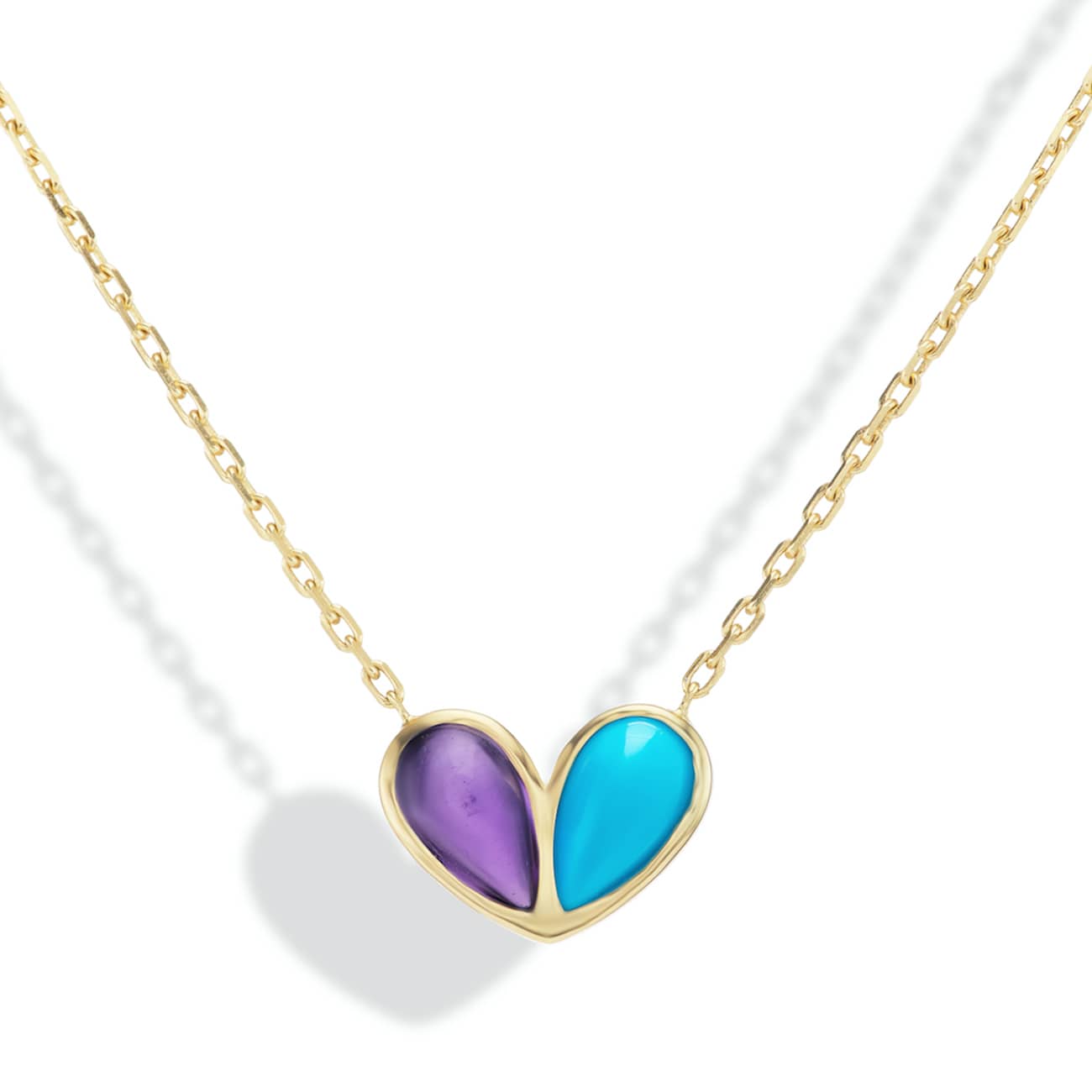
Gemella
Gemella
Gold, amethyst and turquoise necklace
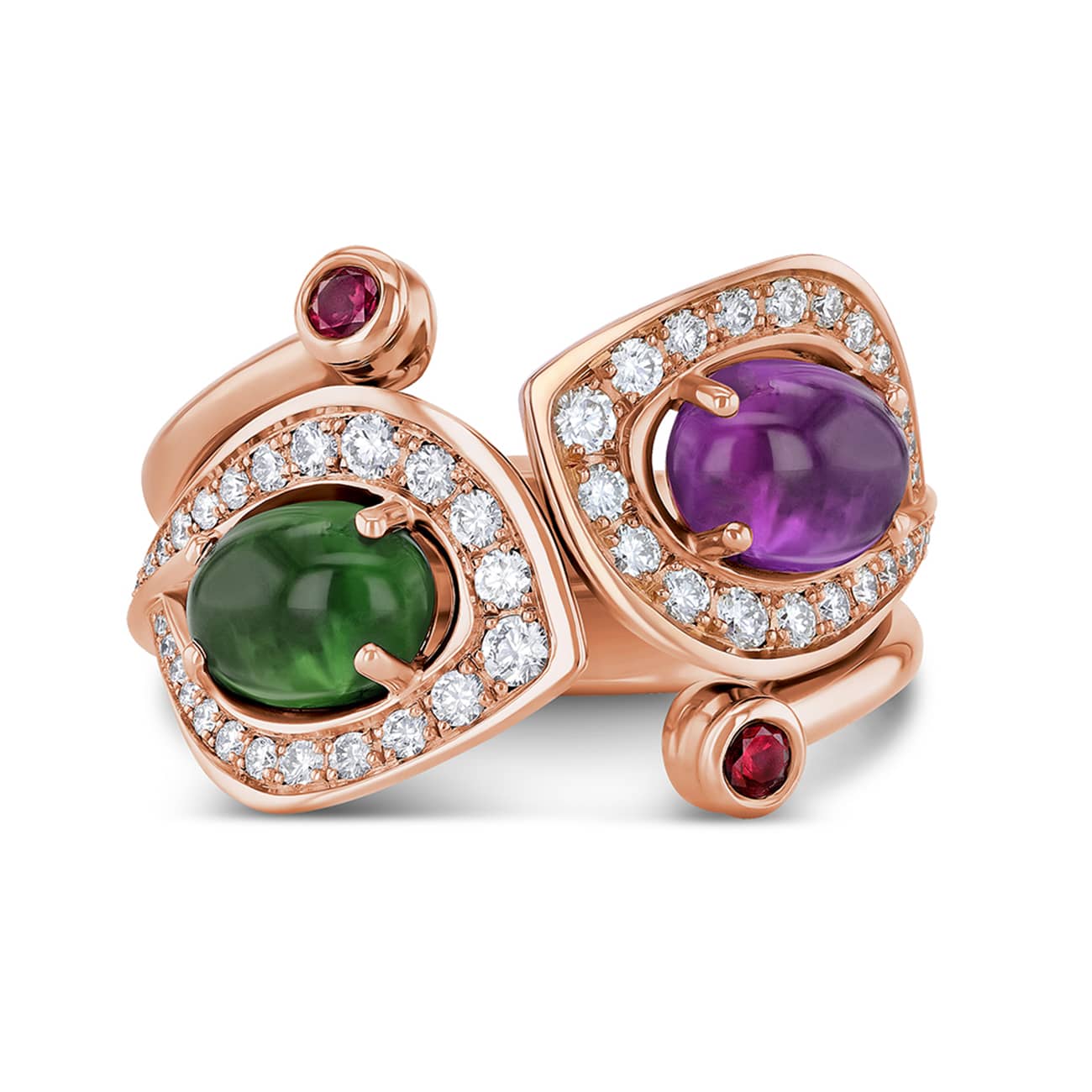
Gübelin Jewellery
Gübelin Jewellery
Stackable Lily Dew rings in gold, amethyst, green tourmaline and diamond
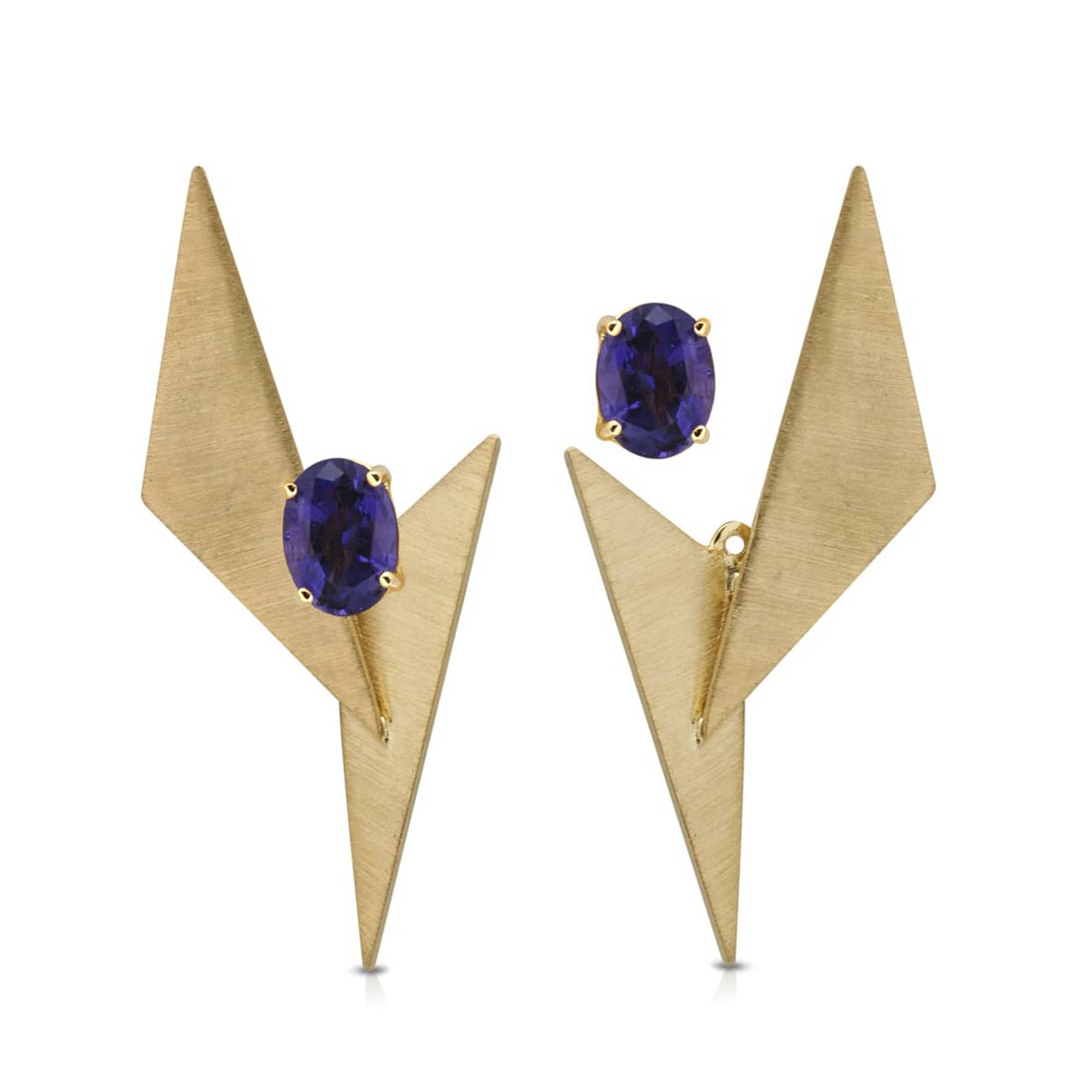
Kavant & Sharart
Kavant & Sharart
Gold and amethyst earrings
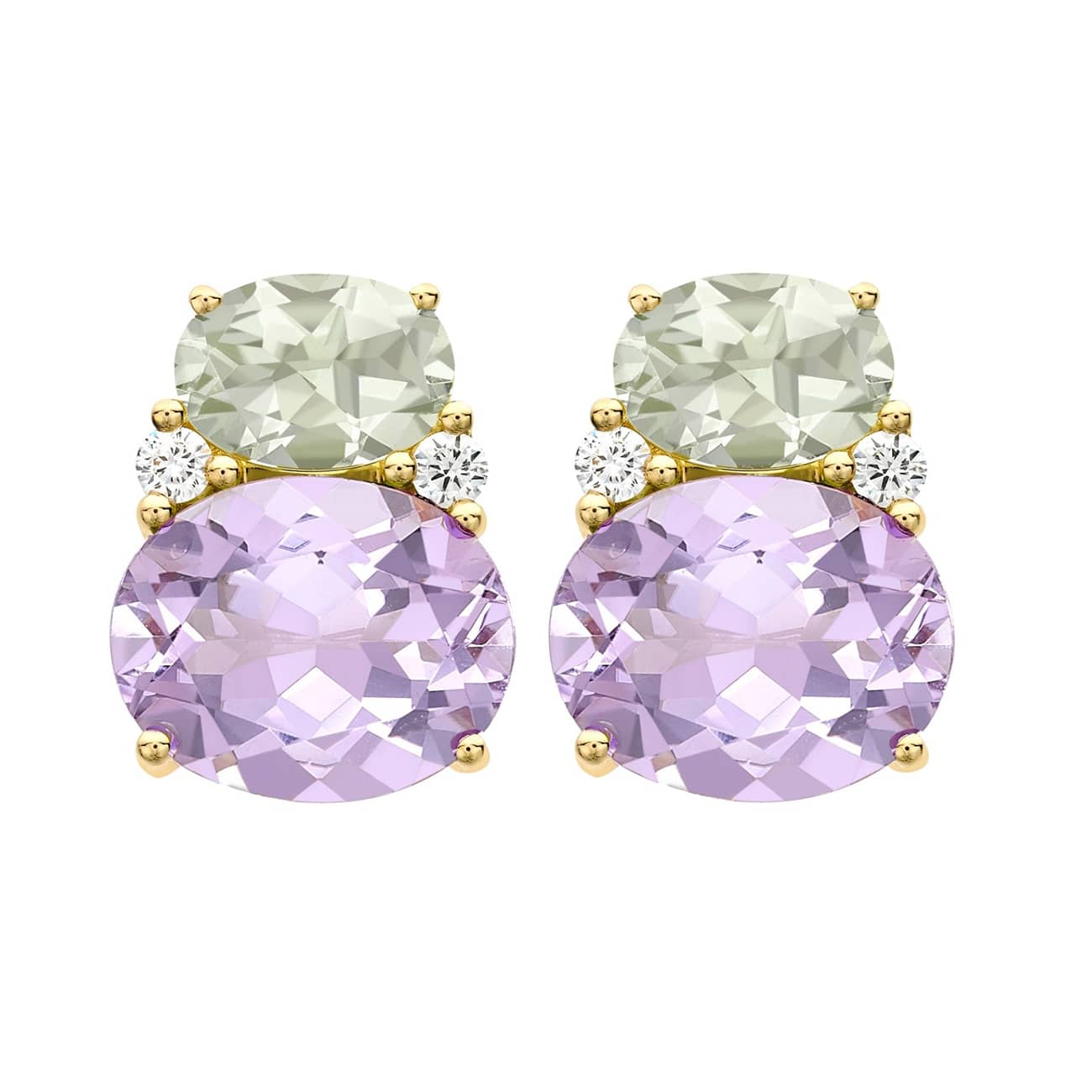
Kiki McDonough
Kiki McDonough
Gold, amethyst and diamond earrings
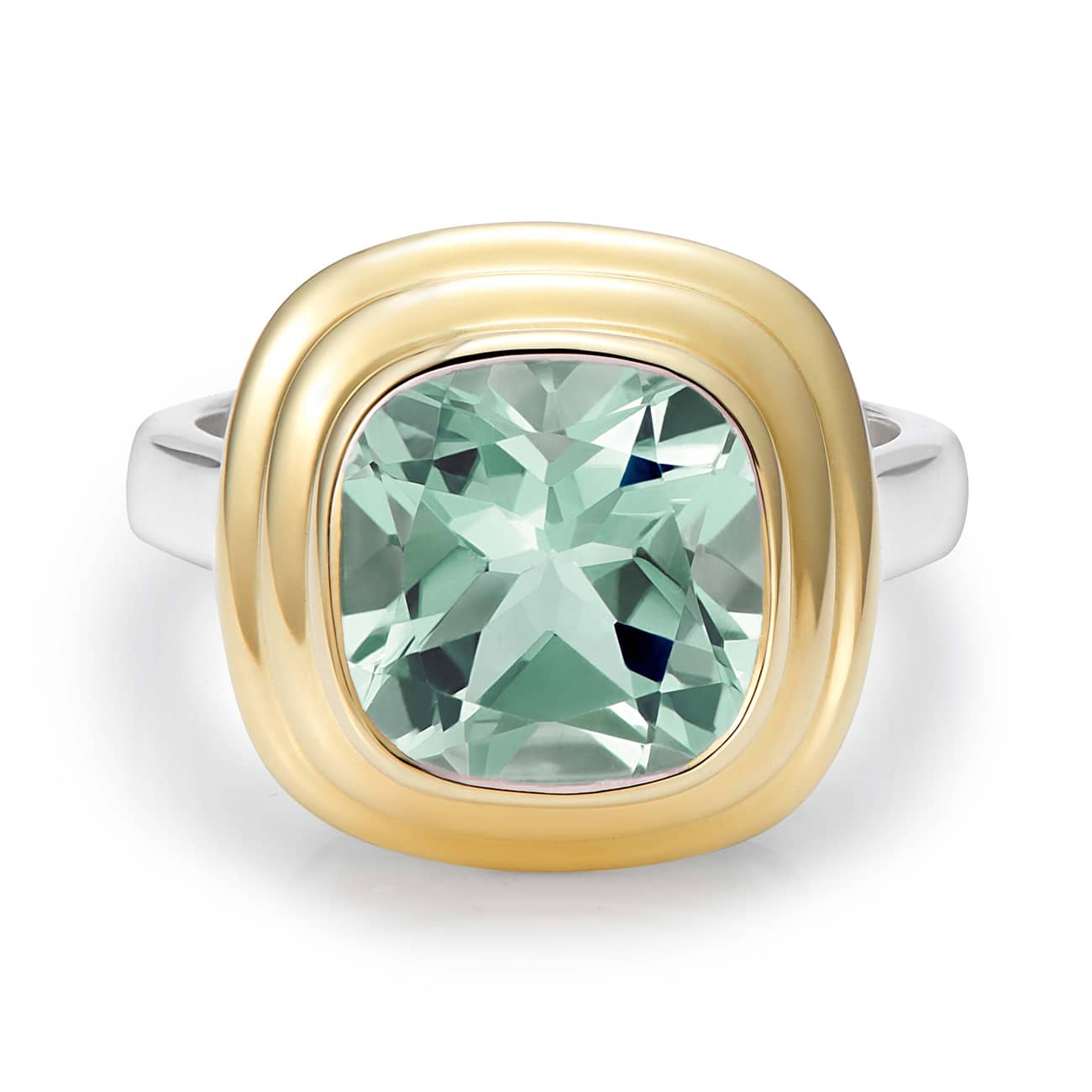
Minka Jewels
Minka Jewels
Gold and amethyst ring
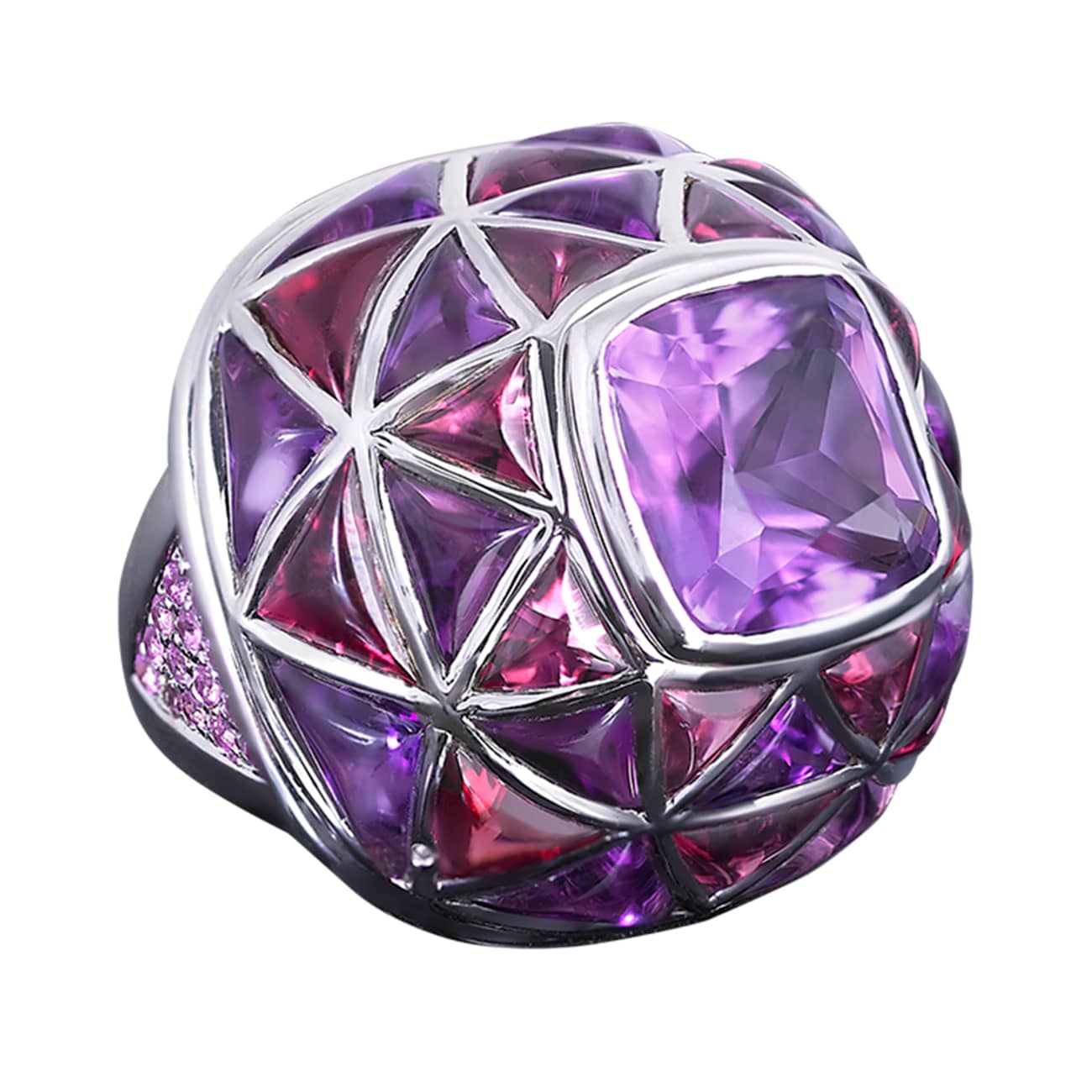
Moussaieff
Moussaieff
White gold, amethyst and pink sapphire ring
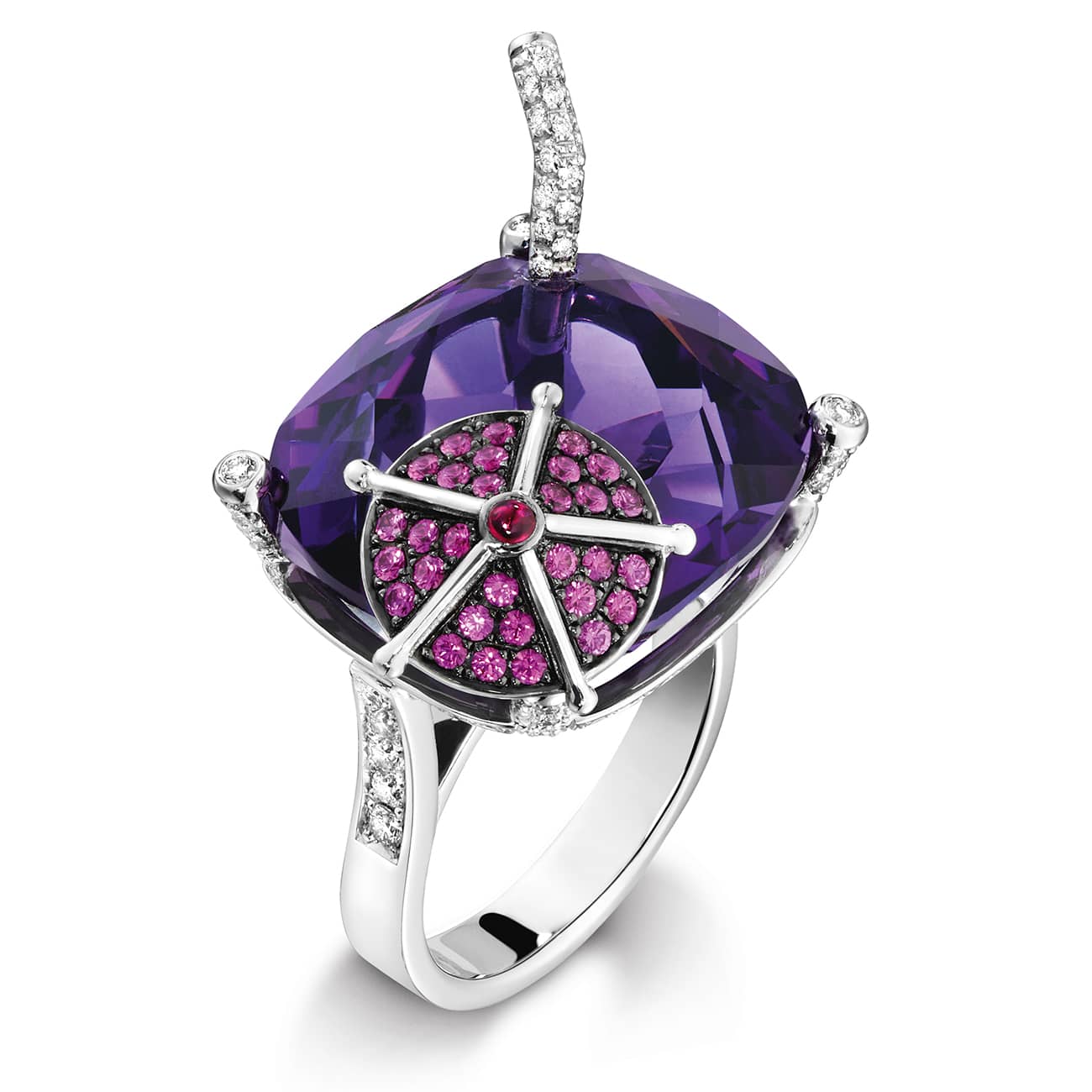
Piaget
Piaget
Limelight Cocktail Party ring in white gold, amethyst, sapphire and diamond
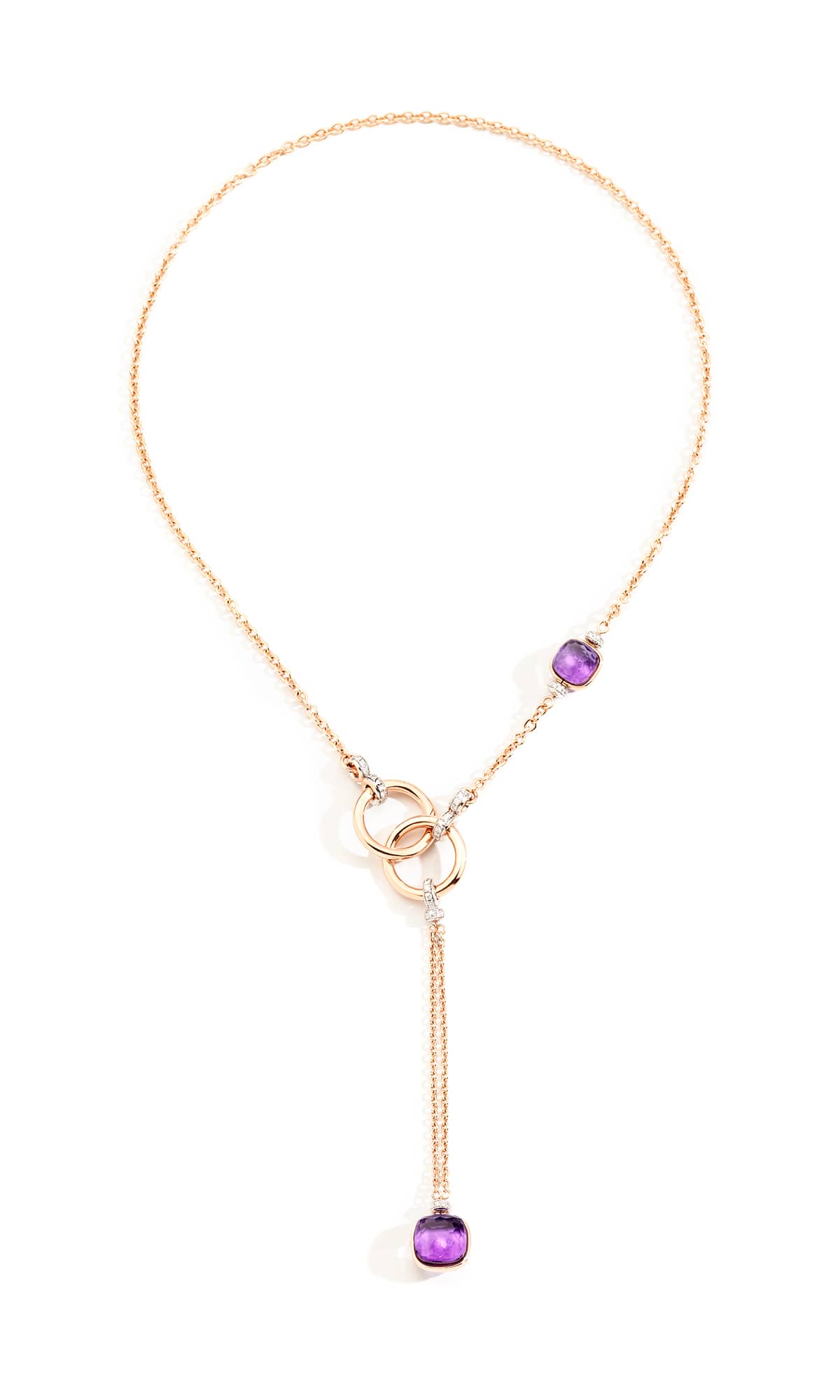
Pomellato
Pomellato
NUDO necklace in rose gold, amethyst and diamond
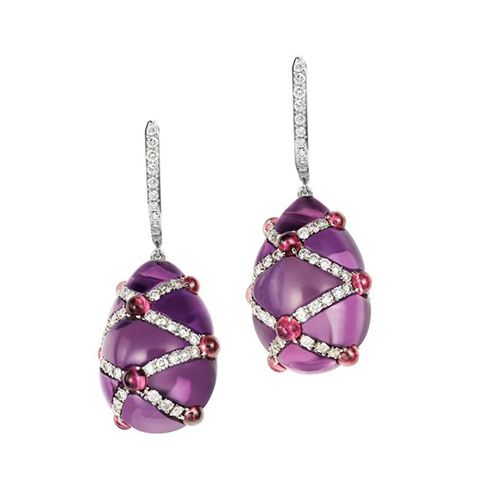
Boghossian
Boghossian
White gold, amethyst, ruby and diamond earrings
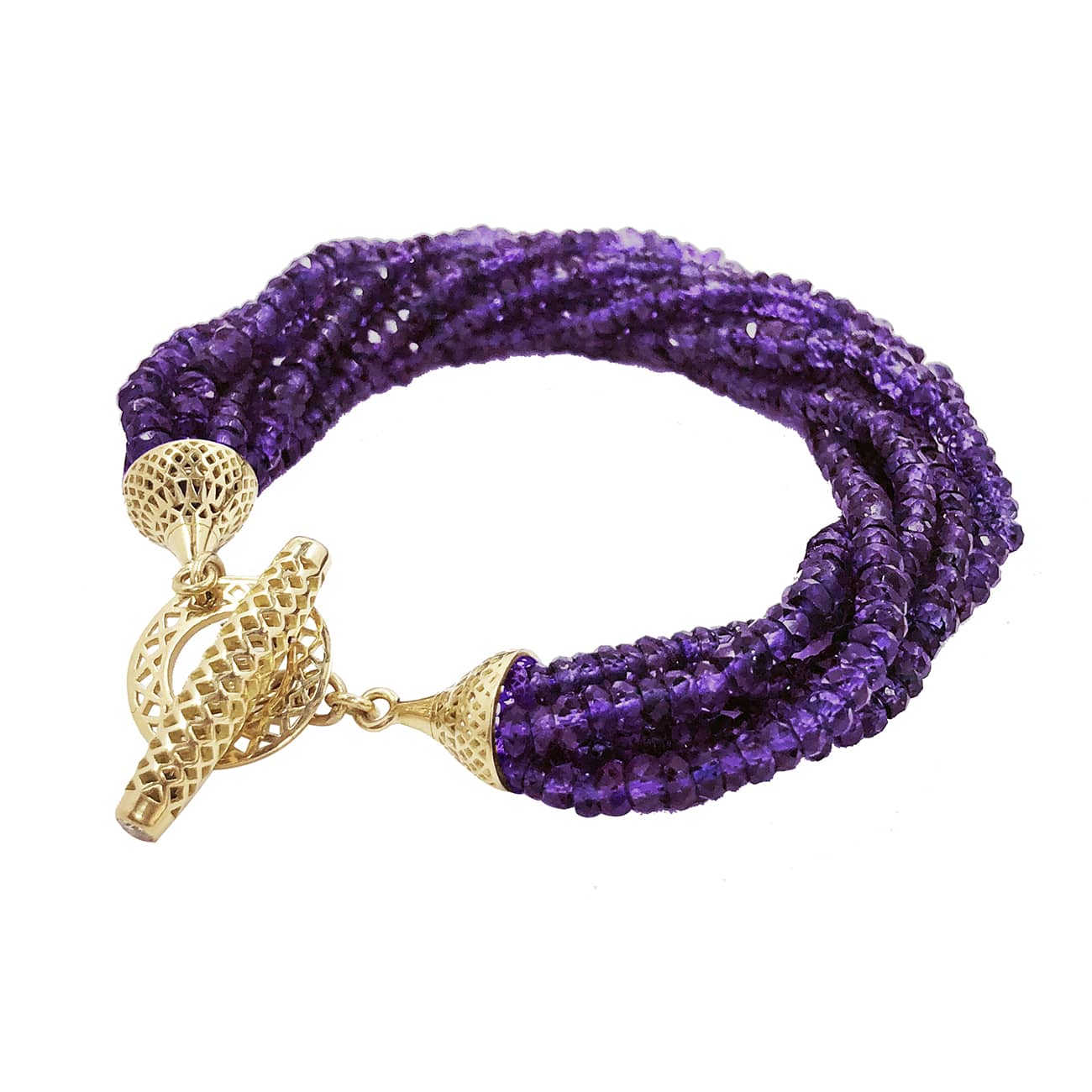
Ray Griffiths
Ray Griffiths
Gold and amethyst braceleet
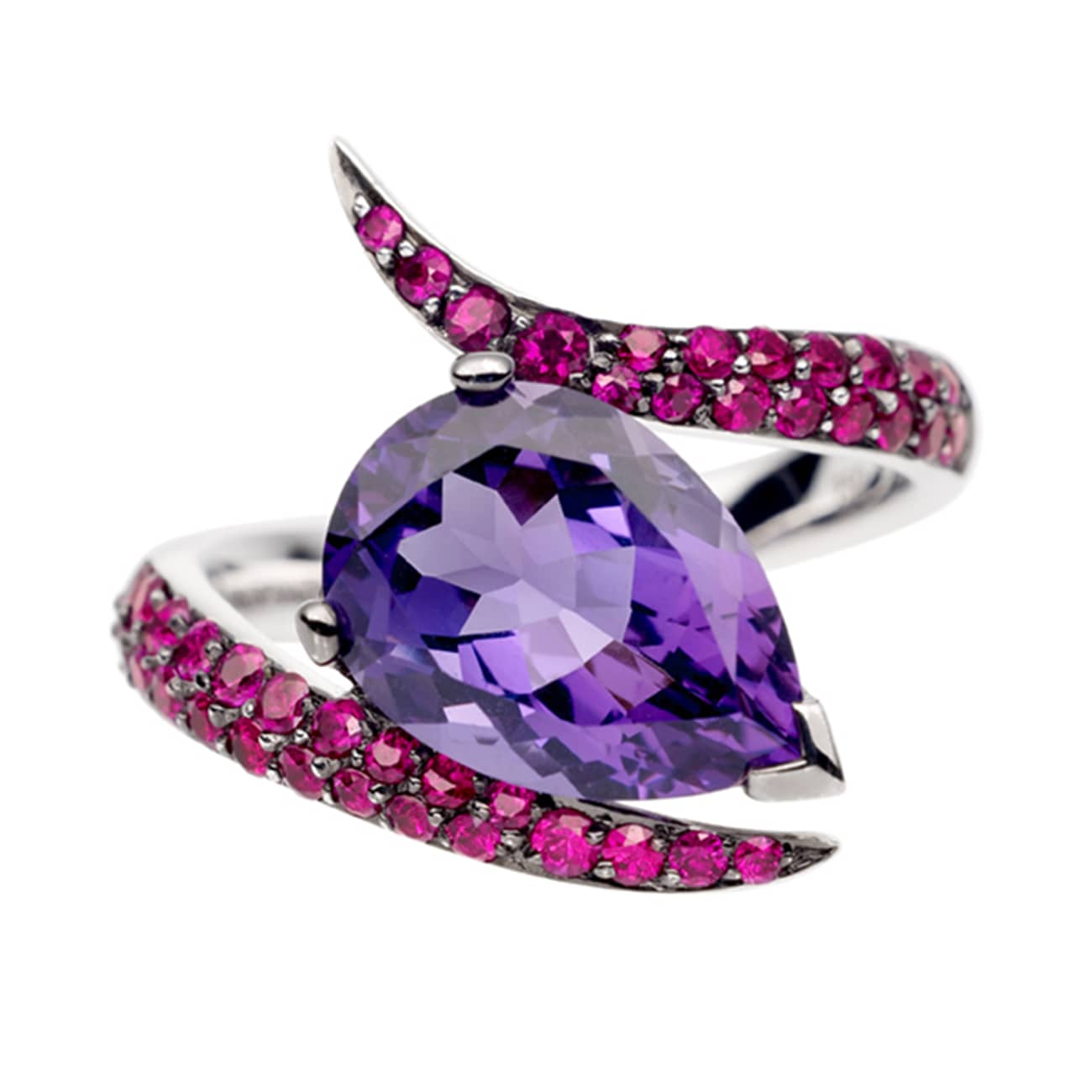
Shaun Leane
Shaun Leane
Aurora Ring in white gold amethyst and ruby ring
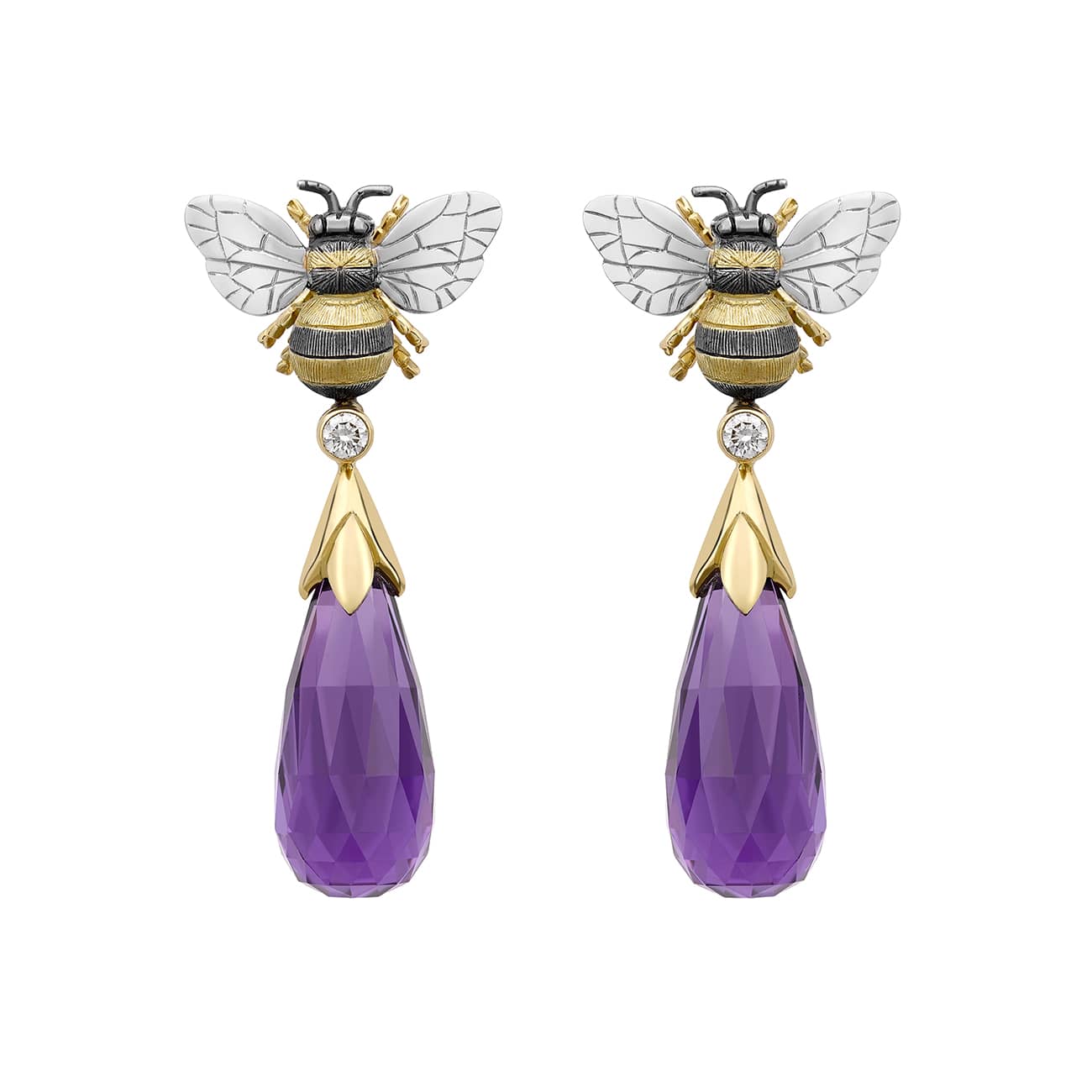
Theo Fennell
Theo Fennell
Large Bee Drop earrings in gold, amethyst and diamond
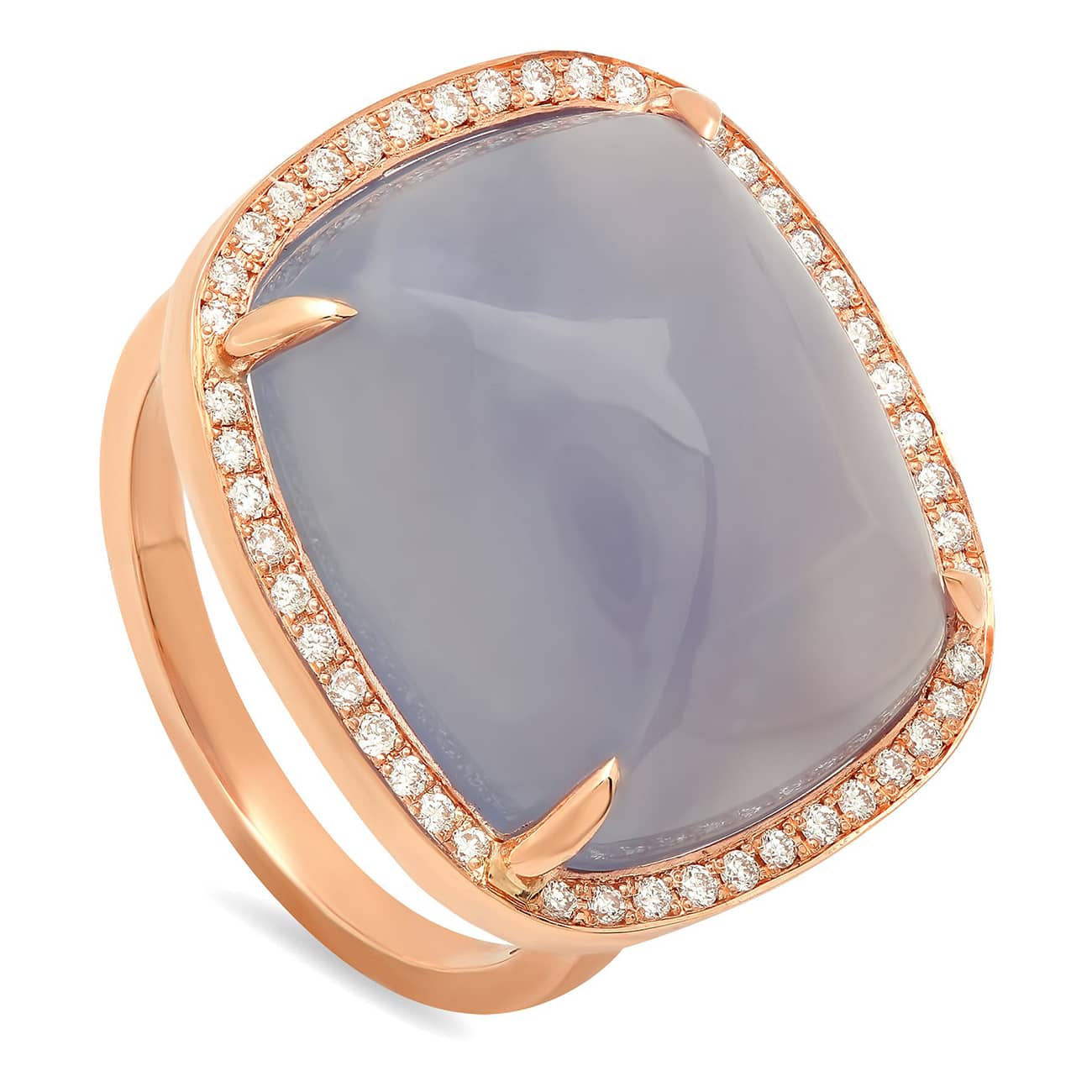
Sig Ward
Sig Ward
Gold, amethyst and diamond ring
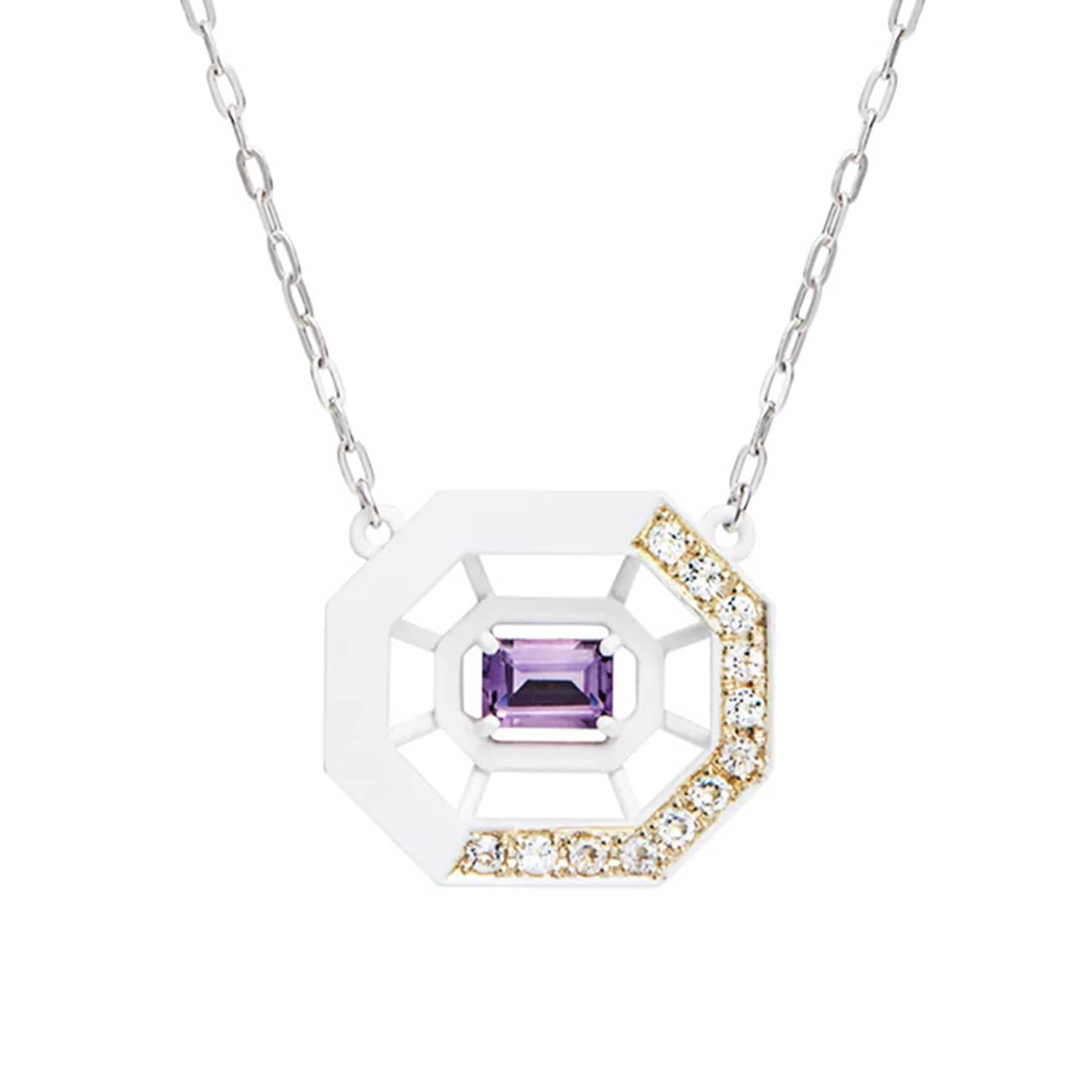
The Vit
The Vit
Gold, amethyst, enamel and diamond necklace
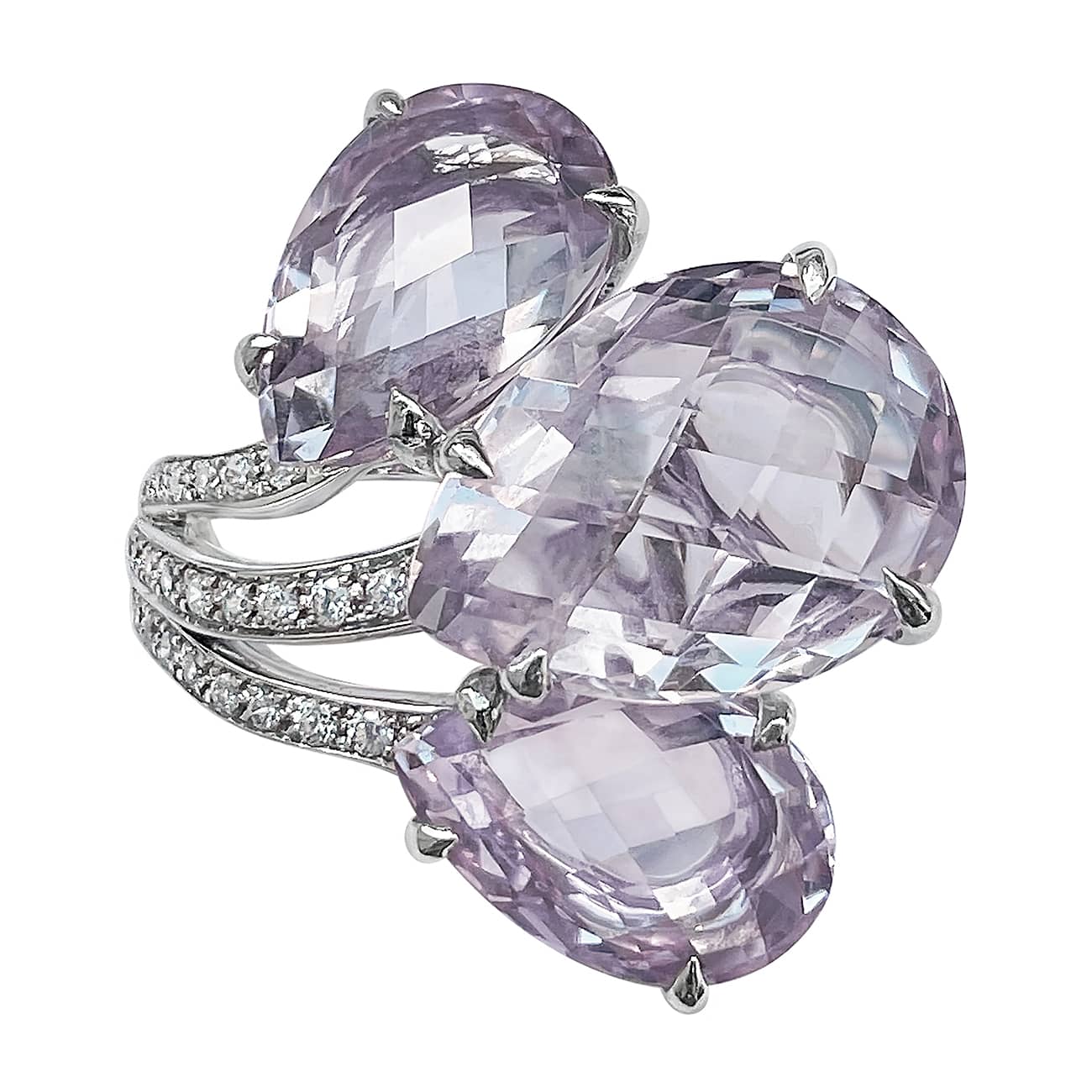
Isabelle Langlois
Isabelle Langlois
White gold, amethyst and diamond ring
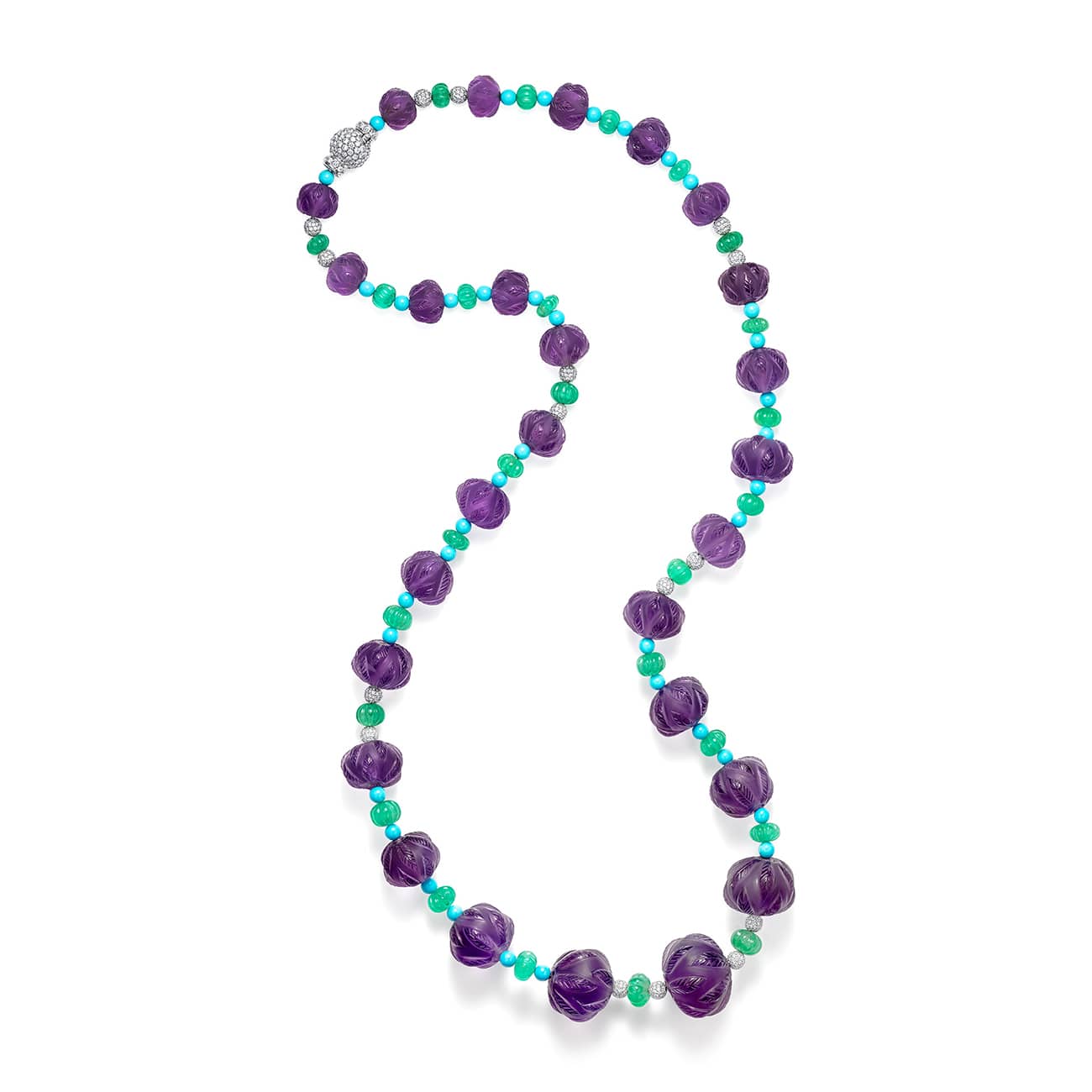
K&Co
K&Co
Gold, amethyst, turquoise, emerald and diamond necklace
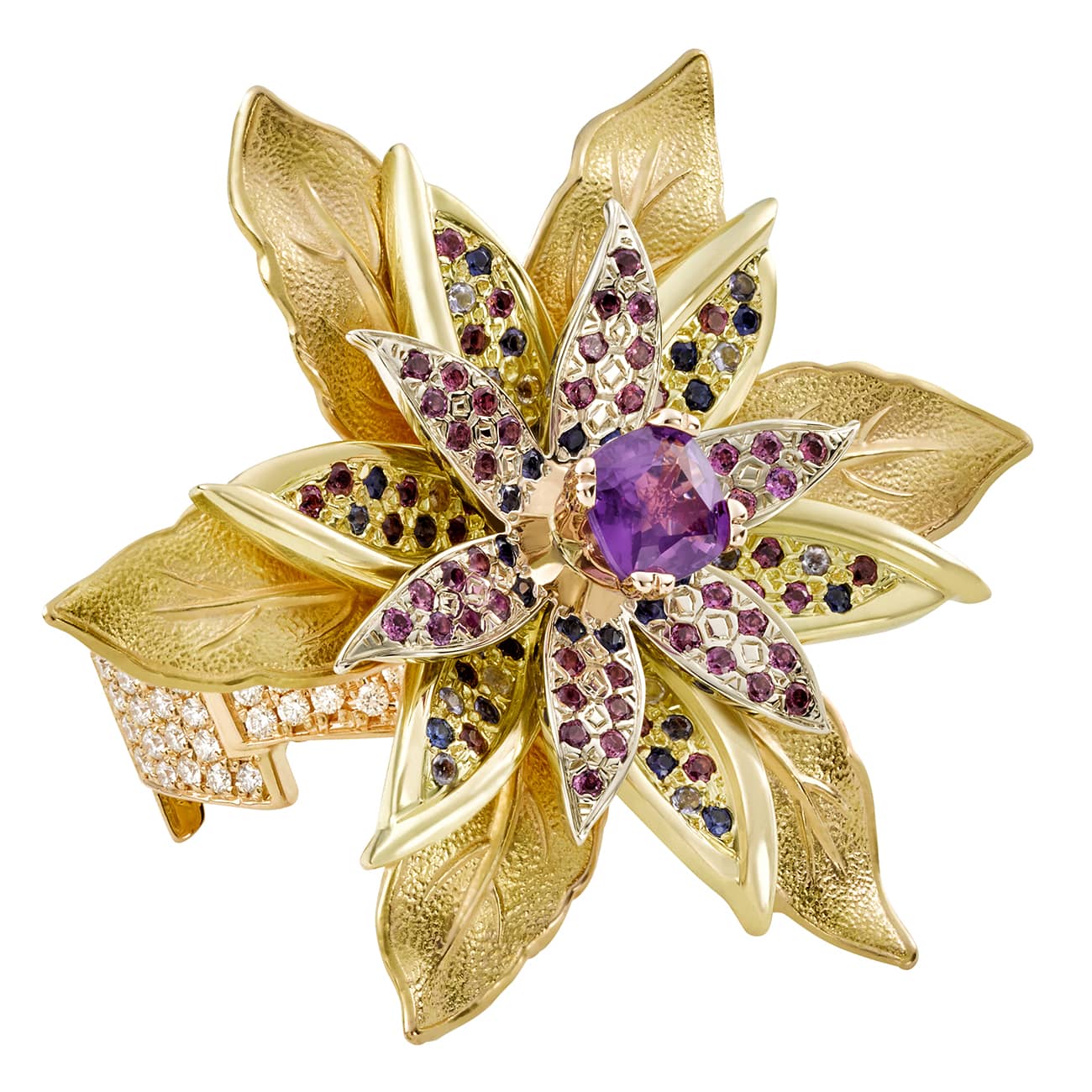
Misahara
Misahara
Gold, amethyst, coloured gemstones and diamond brooch
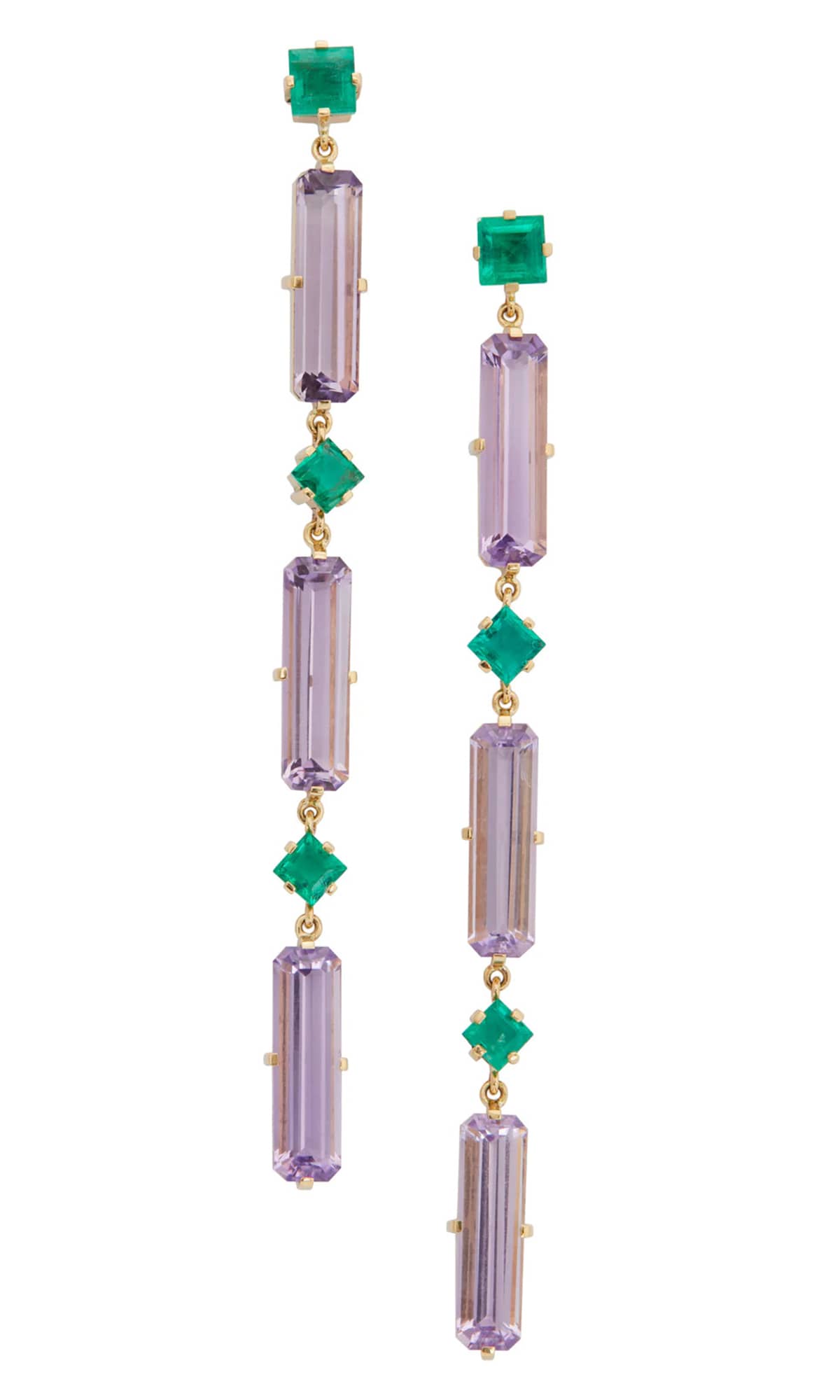
Yi Collection
Yi Collection
Gold, amethyst and emerald earrings
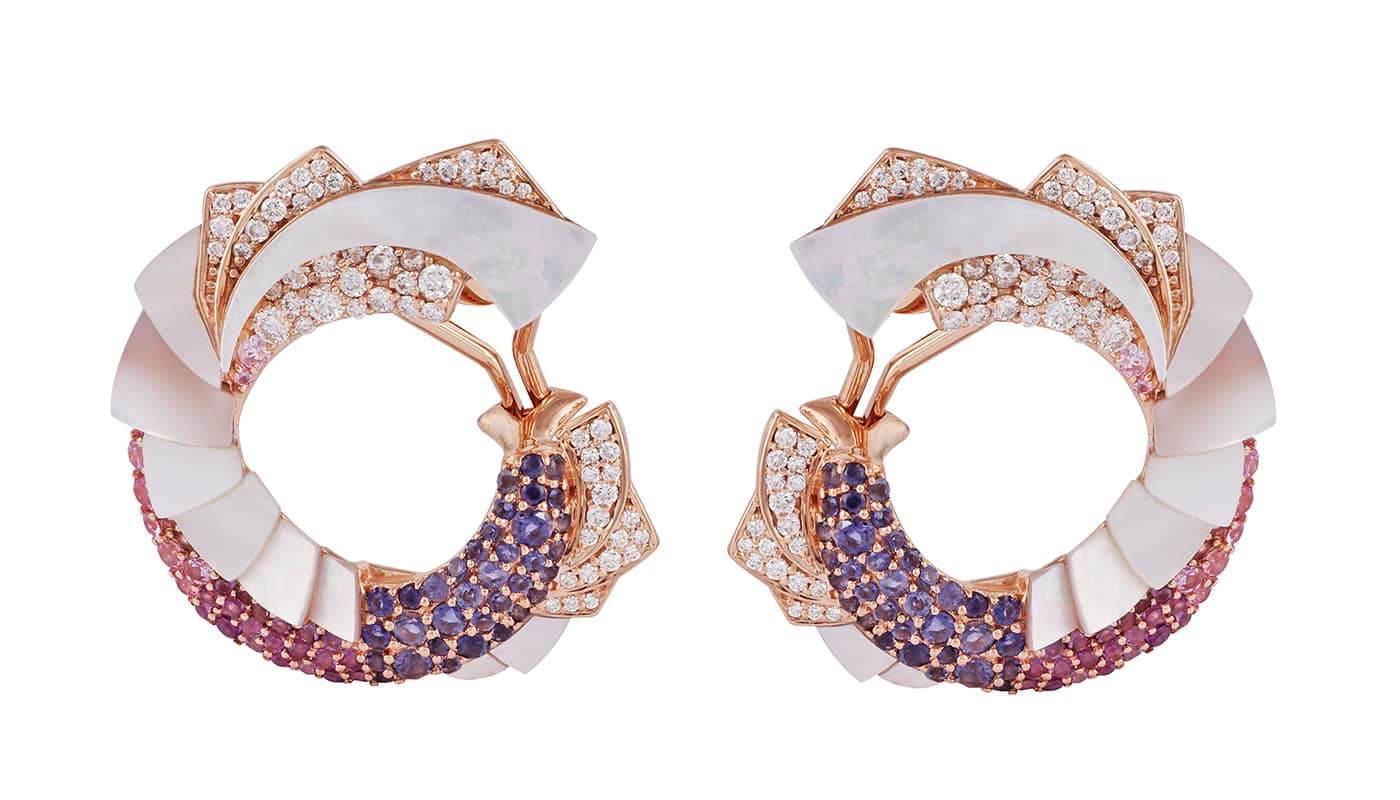
Ananya
Ananya
Gold, amethyst, mother of pearl, sapphire and diamond earrings
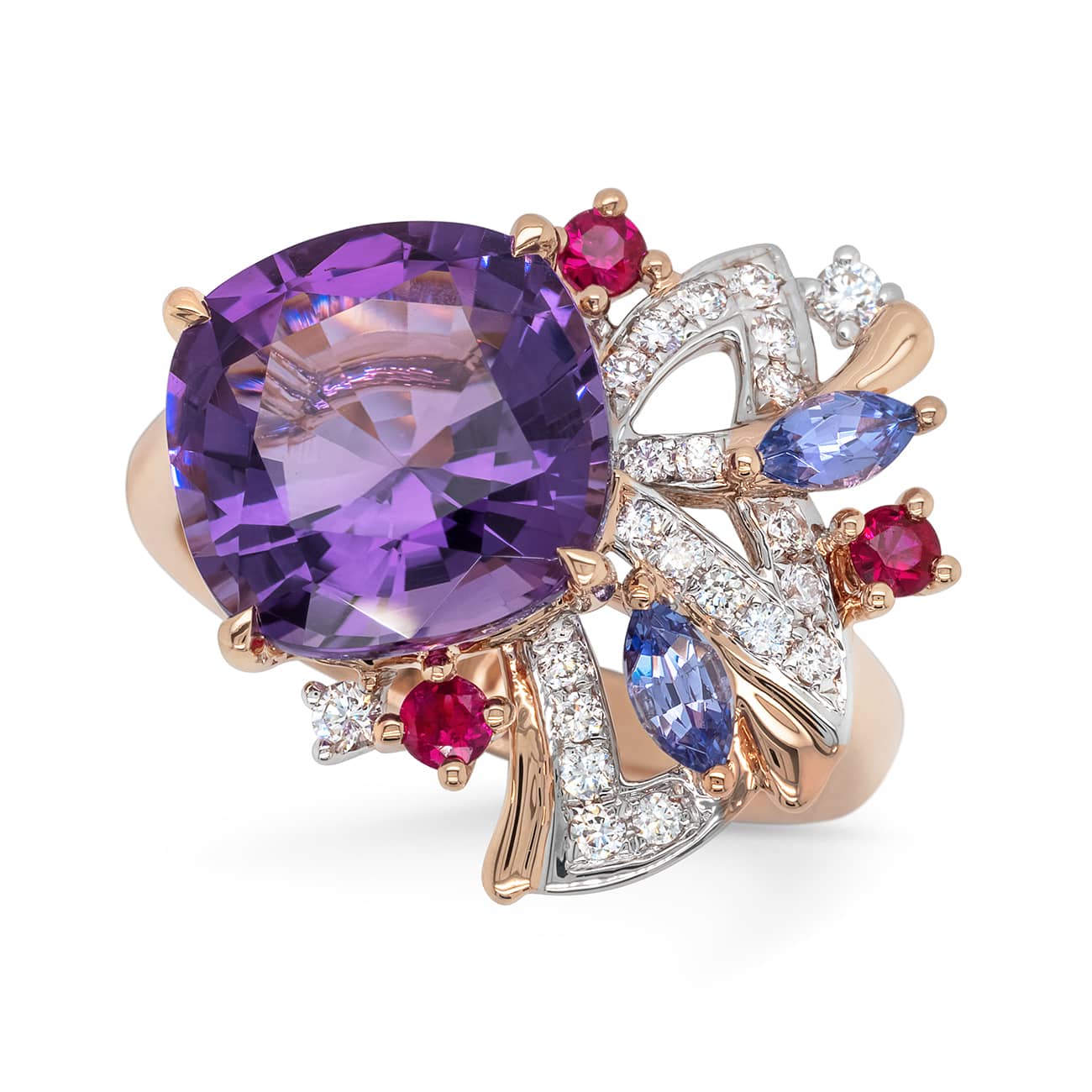
Madly Gems
Madly Gems
Gold, amethyst, coloured gemstones and diamond ring
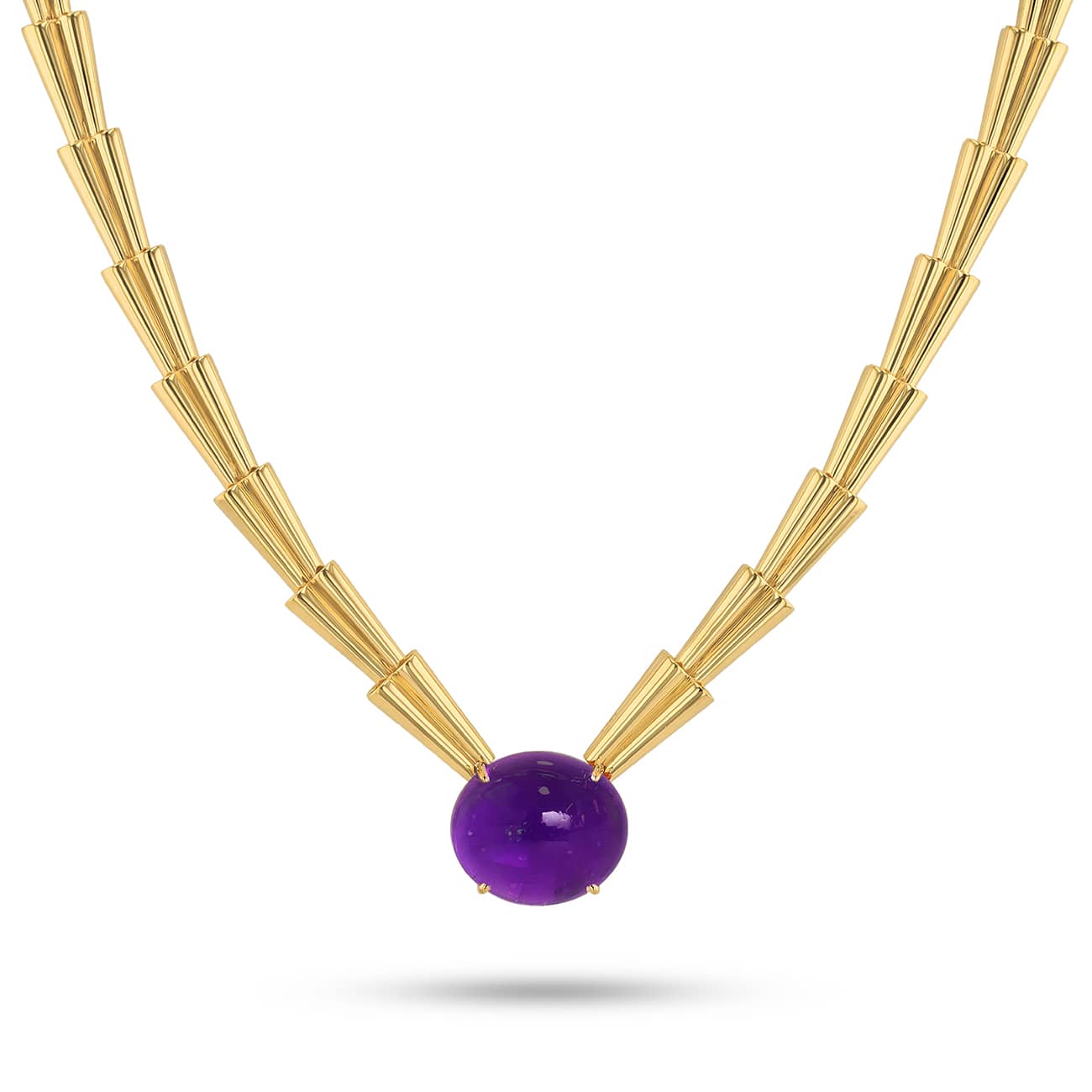
TOKTAM
TOKTAM
Gold and amethyst necklace
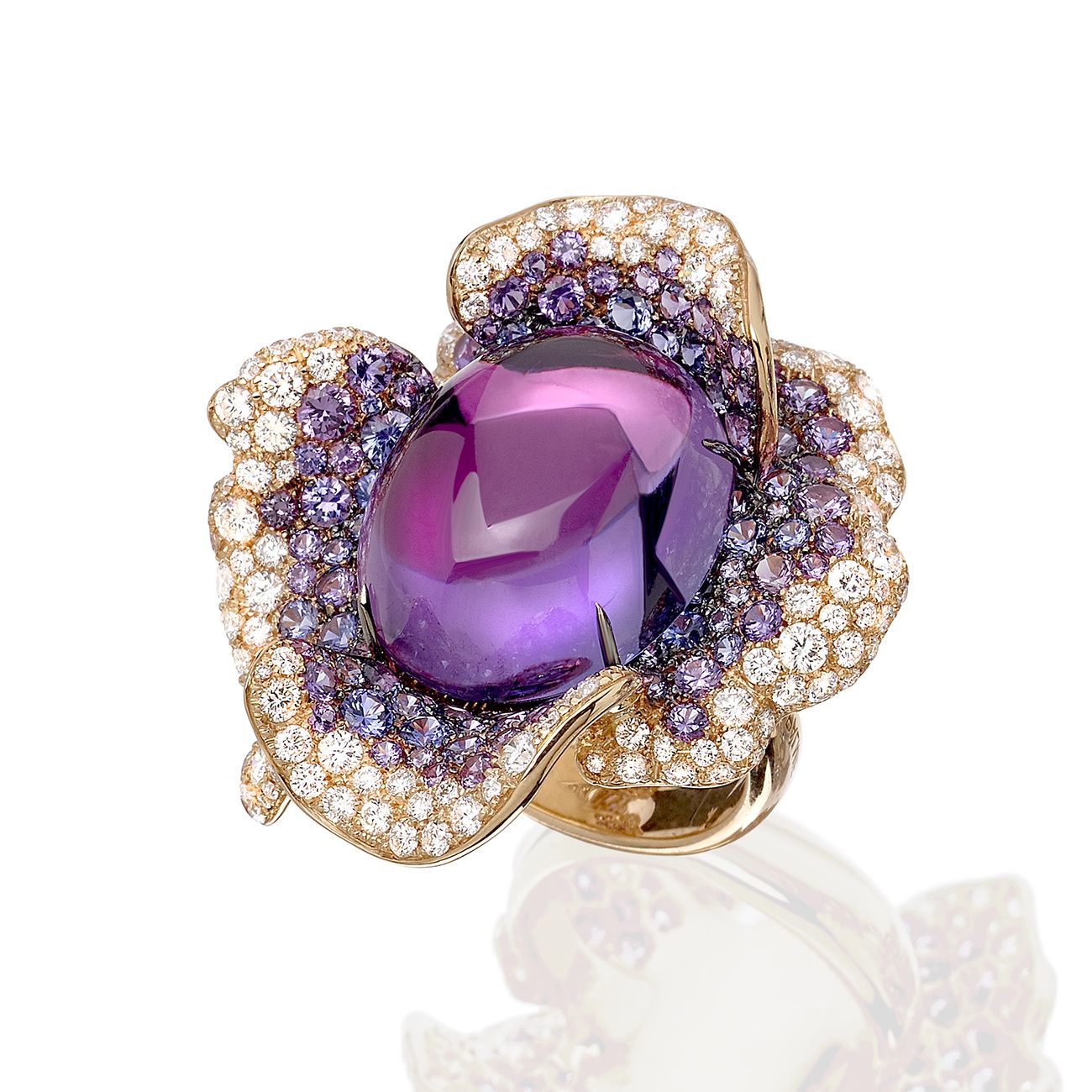
Palmiero
Palmiero
Gold, amethyst, coloured gemstones and diamond ring
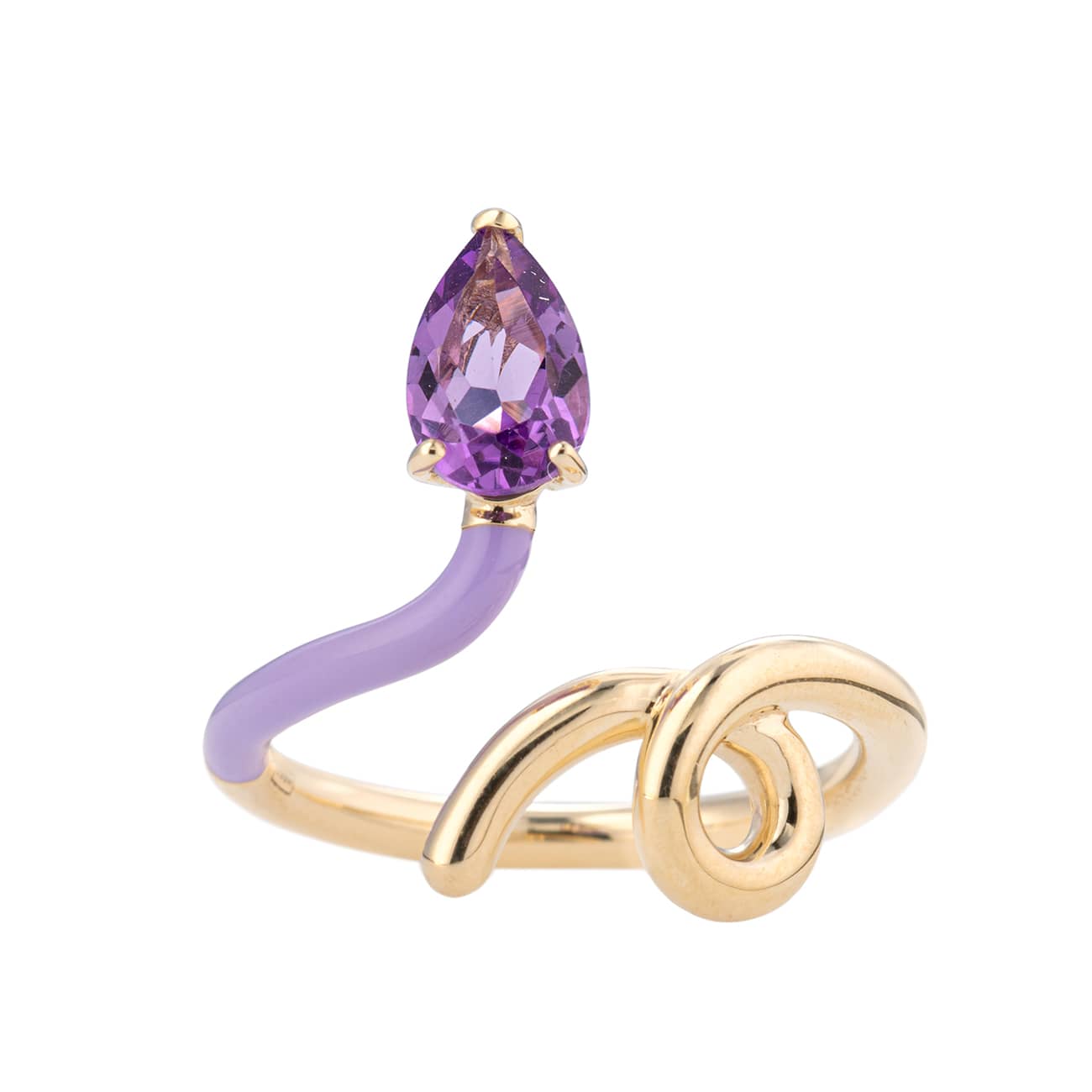
Bea Bongiasca
Bea Bongiasca
Gold, amethyst and enamel ring
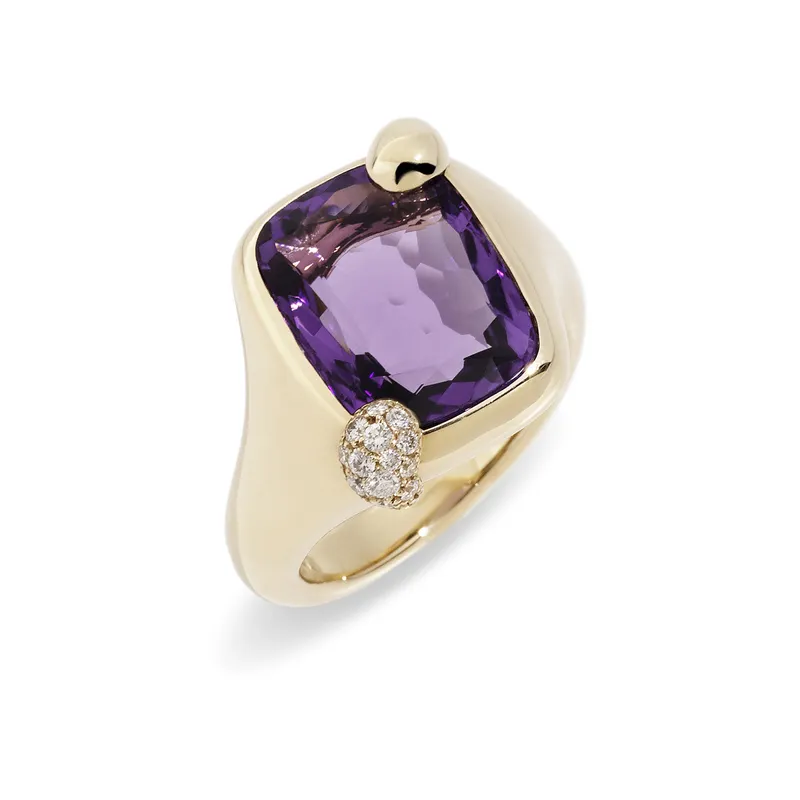
Pomellato
Pomellato
‘Ritratto’ ring with amethyst set in rose gold

WORDS
Katerina Perez is a jewellery insider, journalist and brand consultant with more than 15 years’ experience in the jewellery sector. Paris-based, Katerina has worked as a freelance journalist and content editor since 2011, writing articles for international publications. To share her jewellery knowledge and expertise, Katerina founded this website and launched her @katerina_perez Instagram in 2013.
